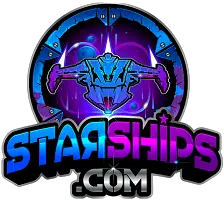

Is Star Trek Based in the Milky Way?
By: Author Brad Burnie
Posted on Published: September 23, 2020 - Last updated: January 21, 2023

Share the Universe!
When watching the TV show Star Trek , it’s hard to imagine where it takes place. There are so many fantastic places within the show that don’t seem real. Which begs the question of where exactly is the Star Trek universe based?
Star Trek is based mostly in the Milky Way galaxy. The star system is divided into four different quadrants, which are Alpha , Beta, Gamma, and Delta . The characters from earth are generally have a limits on how far and how fast they can travel, compared to some of the other alien species or entities.
Let’s take a closer look at the Milky Way galaxy through a Star Trek lens.
What Is the Milky Way?
The Milky Way is the galaxy in which our planet is located. It’s only one of the billions of galaxies in the known universe.
The Milky Way is shaped like a barred disk. In space, this is known as a spiral galaxy. It has four main arms that spiral around a large center. Our Sun, Earth, and the rest of our solar system are actually located on a spur resting between two major arms. This spur is known as the Orion Arm .
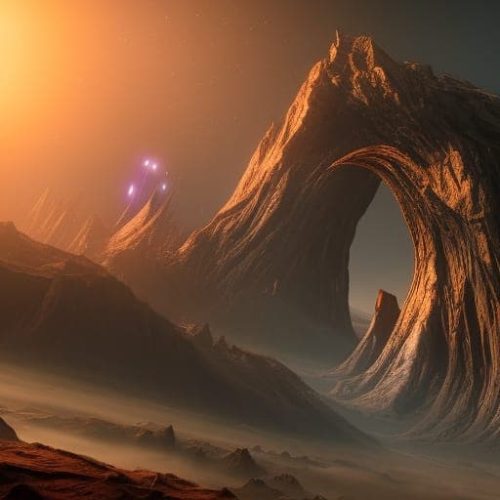
Star Trek is based almost completely in the Milky Way galaxy, and this is due to their limited technology. It was once believed that the galaxy measured 100,000 light-years across. However, new studies have shown that it’s actually 200,000 light-years across.
In order to travel just one light-year, it would take you about 20,000 years . This is because one light-year is 6 trillion miles. The Enterprise is capable of traveling many light-years at a time.
Quadrants, Sectors, and Barriers Are Important for Navigation
In real life space, major areas of a galaxy are divided into four galactic quadrants . Even though the galaxy is a 3-dimensional space, it can be viewed in a 2-dimensional way, similar to a flat map.
Once the galaxy has this 2-dimensional map, it’s oriented with the faces of a clock. The top of the map will show 12 o’clock, and a median line with travel from that degree down to the bottom of the galaxy, which is labeled 6 o’clock. From there, a second median will go from the 3 o’clock position, straight across to 9 o’clock.

In real life, these medians intersect in the center of the Sun, with the quadrants covering different space areas from that point. In Star Trek, the medians actually intersect in the middle of the Milky Way, which is called the galactic center.
These quadrants in Star Trek are named Alpha , Beta, Gamma , and Delta . At the beginning of the Star Trek universe’s creation, the term quadrant was used inconsistently . Oftentimes the word was used to describe smaller sections of the galaxy as well as the larger four mentioned above.
As the show’s popularity grew and the universe expanded beyond just the original Star Trek, the way the galaxy was divided up was solidified. The four quadrants of the Milky Way became more consistently referred to. However, it can still be confusing, no matter how developed the show has become.
Two barriers in the Star Trek universe need to be mentioned. The first is the galactic barrier. This is a field of negative energy that disrupts machines that travel through. It can also mess with human and alien bodies. It encompasses the entire Milky Way like a dome.
Another barrier in the Milky Way is the great barrier. This is a barrier in the Star Trek universe that is located around the galactic center. It surrounds the center of the Milky Way and then reaches up to touch the top and bottom of the galactic barrier.
Check out this video below for a more in-depth explanation of the Star Trek Galactic Barriers:
This Alpha quadrant is found between the 6 and 9 o’clock positions of the galactic plane. This quadrant (as well as Beta) is the main stage for the TV shows Star Trek: The Original Series, Star Trek: The Next Generation, Star Trek: Deep Space Nine, and Star Trek: Enterprise.
Now, Earth is located in the Alpha quadrant. Alpha is where the majority of the United Federation of Planets is located. It also holds a wormhole that leads to the Gamma quadrant ( more on that later ). The planet Vulcan , which is home to the famous character of Spock , is located in this quadrant.
There was speculation about where exactly Earth is within the Alpha quadrant. There are some instances when it appears on onscreen maps as being right on the Alpha and Beta quadrants’ border. However, recent adaptations of the franchise have determined that our solar system is within the Alpha quadrant, close to Beta’s border.
Beta is located between the 3 and 6 o’clock positions of the galactic plane. As mentioned above, many of the TV show and movie adaptations of the franchise occur within this quadrant.
The Beta quadrant is also home to many familiar alien species within the Star Trek universe. The most notable species that are located within the Beta quadrant are the Klingons and Romulans . However, in Star Trek: Deep Space Nine , it doesn’t place the Klingons and Romulans within the Beta quadrant.
In fact, this TV show adaptation places both species within the Alpha quadrant. In an interview , Ricard D. Moore said that this is because the audience believed Klingons and Romulans lived in Alpha with the rest of the Federation. The team working on Deep Space Nine felt it was important to keep it that way.
Gamma is situated between the 9 and 12 o’clock positions of the galactic plane. Most of what we know of the Gamma quadrant is learned from the TV adaptation of Star Trek: Deep Space Nine.
In addition to being the home of Changelings and the Dominion, the Gamma quadrant is where the Bajoran wormhole . It’s this wormhole that allowed the crew in DSN to be transported to the Gamma quadrant.
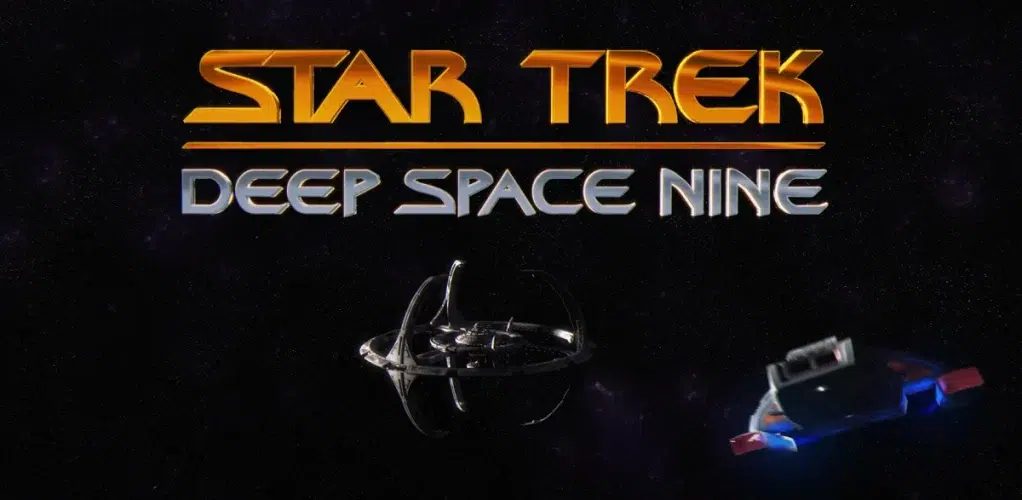
This sent them 70 thousand light-years away from the Alpha quadrant. This is on the complete opposite side of the galaxy. The Federation decided to move the Deep Space 9 space station there, rather than its previous location in orbit around Bajor . It was a strategic move.
The Delta quadrant is located between 12 and 3 o’clock positions. This area of space is hardly explored. In fact, there wasn’t much known about this region of the Milky Way until Star Trek: Voyager .
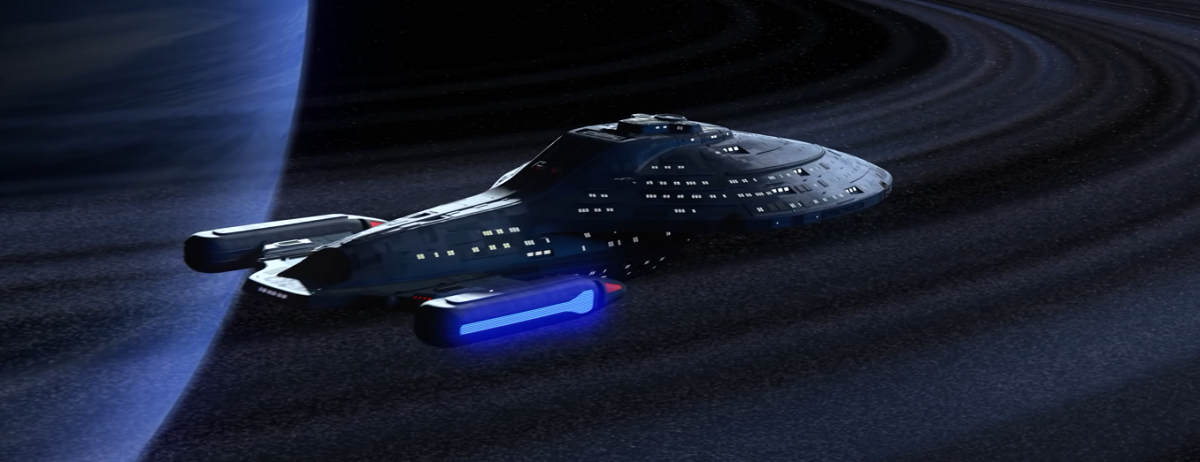
It was the main stage for the TV adaptation, so any quadrant knowledge was mapped out by their journey through. However, when they returned to Earth, that information was given to the Federation.
The biggest known threat in the Delta quadrant was the Borg . The collective mind robotic enemy that was a force to be reckoned with made the Delta quadrant their home until the Federation finally wiped them out.
While there are quadrants for large and small areas of space, there are also sectors. These sectors are used to measure smaller areas, and each quadrant can have thousands of them. Sectors are a gridded area of space that can be determined by a certain number of light-years.
It’s fascinating how expansive the Star Trek universe is and how the TV show’s creators made each new world in-depth. We have no real way of knowing how accurate they are, but it would be something if those Vulcans and Klingons were out there in our star system somewhere. Hopefully, this article was helpful in mapping how Star Trek is based in the Milky Way .
- Galaxy Map: Basic plan of the Milky Way
- Wikipedia: Galactic quadrant
- Star Trek Dimension: The division of the Star Trek Galaxy
- Science Fiction & Fantasy Stack Exchange: How big is the known Star Trek universe?
- Science Fiction & Fantasy Stack Exchange: Can anyone explain the Star Trek astrography (i.e. quadrants)?
- National Geographic: Star Trek is Right About Almost Everything
- Space: Milky Way Galaxy: Facts About Our Galactic Home
- Live Science: How Long Would It Take to Cross the Milky Way at Light Speed?
- YouTube: Galactic Barriers (Star Trek)
- Star Trek: Alpha Quadrant
- Star Trek Online: Milky Way
- Star Trek: ONE TREK MIND: The Galactic Barrier
- Fandom: Milky Way Galaxy
- Fandom: Galactic barrier
- NASA: Space Place: What Is a Light-Year?
- Wikipedia: Light-year
- Starbase118: Galactic Barrier
- Fandom: Galactic quadrant
- Wikipedia: Star Trek: The Original Series
- Wikipedia: Star_Trek:_The_Next_Generation
- Wikipedia: Star_Trek:_Deep_Space_Nine
- Wikipedia: Star_Trek:_Enterprise
- Wikipedia: Spock
- Wikipedia: Klingon
- Wikipedia: Vulcan_(Star_Trek)#Homeworld
- Wikipedia: Star_Trek
- Wikipedia: Milky_Way
- Wikipedia: Starship_Enterprise
- Wikipedia: Orion_Arm
- Star Trek: Delta Quadrant
- Star Trek: Gamma Quadrant
- Fandom: Vulcan (planet)
- Wikipedia: Ronald_D._Moore
- Way Back Machine: Ronald D Moore Interview
- Wikipedia: Beta_Quadrant
- Fandom: Quadrant
- Wikipedia: Bajoran wormhole
- Fandom: Alpha_Quadrant
- Fandom: Gamma_Quadrant
- Wikipedia: Bajor
- Wikipedia: Borg
- Fandom: Delta Quadrant
- Star Trek Online: Sector space
- Fandom: Sector

Brad Burnie is the founder of Starships.com. He loves all video game genres. In his spare time, he loves reading, watching movies, and gaming
Leave a comment
You must be logged in to post a comment.
- Movies & TV
- Big on the Internet
- About Us & Contact
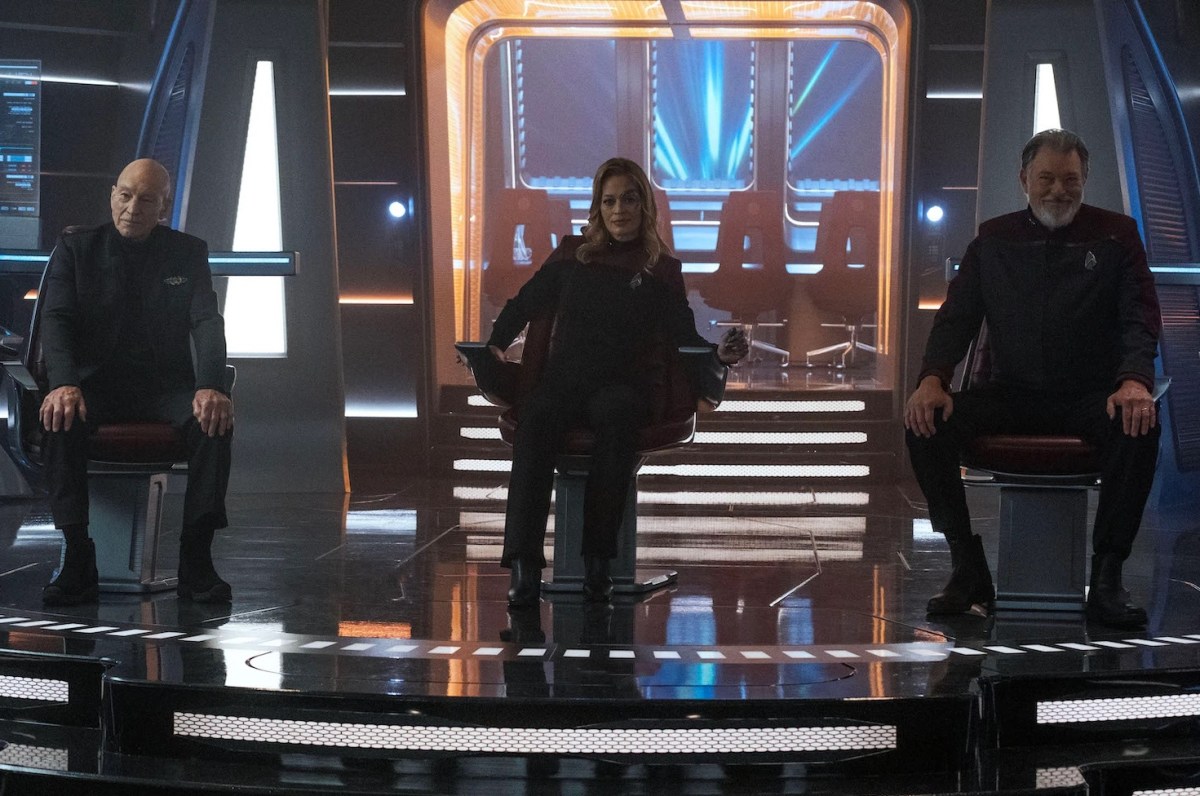
A Wannabe Blue Shirt Officer’s Guide to the Map of the Galaxy in ‘Star Trek’
No matter the fictional universe— be it fantasy or sci-fi or somewhere in between (looking at you, space operas)—I’ve always found maps and cartography one of the most fascinating parts of worldbuilding. There’s something about actually seeing how an author imagines the setting of their story that immediately grounds it in the realm of possibility, and helps immerse viewers in the worlds in which these stories unfold.
Sure, it’s somehow easier when the map consists of a single continent, kingdom, or city on Earth or any other Earth-like location. Bringing the action up into space definitely makes everything a tad more complicated—and a whole lot more fascinating.
And now that the third season of Star Trek: Picard is in full swing , there’s no better time to refresh our collective memory on the “astrogeography” the crews of the USS Enterprise explore.
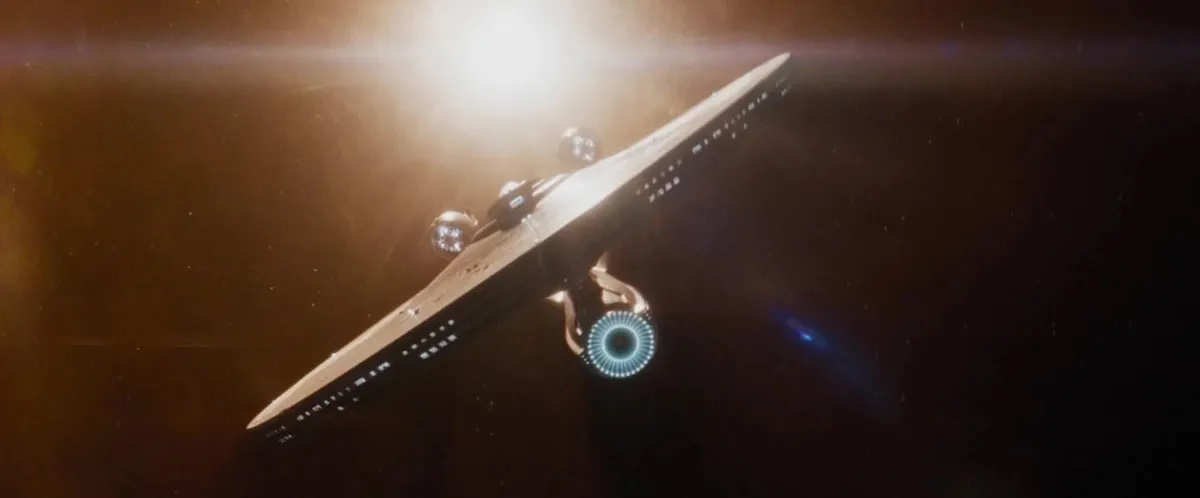
Star Trek and maps
The decades that have passed since Star Trek first premiered on television screens have made it possible for the saga to acquire beautifully complex and detailed lore on pretty much everything related to it—including the planets that make up the United Federation of Planets, and the powers that border it, like the infamous Klingon Empire.
There have actually been several maps made for Star Trek and its locations over the years, as it reads on The Map Room blog . “While original series canon assigned aliens to known nearby stars, and the shows occasionally used real locations, episode writers did not start with a map and generally did not take spatial relationships into consideration, which no doubt has made the belated mapping process a bit more challenging,” The Map Room blog continues, explaining how creating a comprehensive map of the Star Trek galaxy might be easier said than done.
Still, while none of the maps ever put to print or screen have ever been accepted as official canon, most of them have the major power players of the galaxy in more or less the same location. This means we can reasonably assume that this is the actual position in which they can be found in-universe.
The galaxy quadrants
Most of the action in the Star Trek canon takes place within our galaxy, the Milky Way, which has been divided into its famous four primary quadrants, each named after a letter in the Greek alphabet: Alpha, Beta, Gamma, and Delta.
The Alpha and Beta quadrants are the ones that are better known, even in-universe, and that house many of the major players we see throughout the various series—the United Federation of Planets chiefest of all. The Federation has a strong foothold in both quadrants, spanning Alpha and Beta from their shared border outwards.
According to Memory Alpha , the official Star Trek fan wiki, the Alpha quadrant contains two all-important planets that we all know very well: Earth, from which a good majority of the characters in Star Trek canon hail; and Vulcan, the homeworld of the Vulcans and especially of Spock. This quadrant also contains the Cardassian Union, the Ferengi Alliance, and the Breen Confederacy—among other smaller factions—whose representatives make an appearance in the canon, particularly in Star Trek: Deep Space Nine .
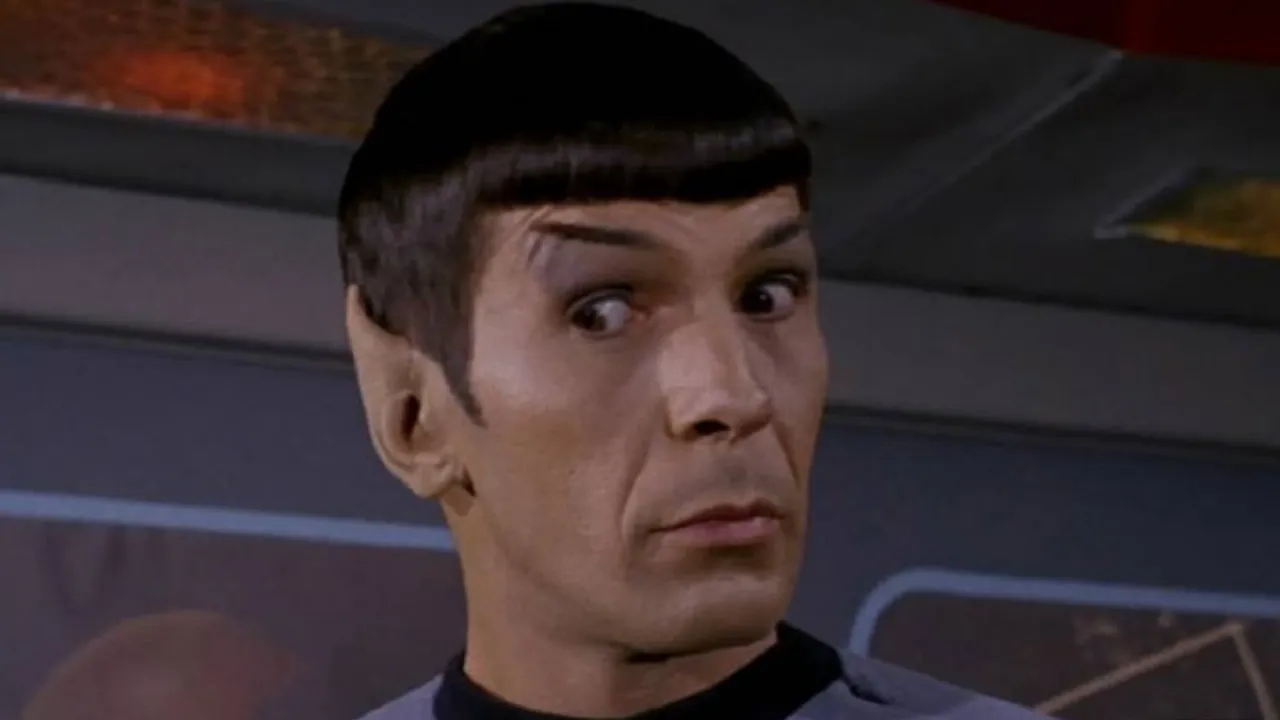
The Beta quadrant includes a couple of relatively smaller players like the Nyberrite Alliance and the Tholian Assembly, and then the major forces of the Romulan Star Empire and the infamous Klingon Empire—who both have their respective homeworlds, Romulus and Qo’noS, in this quadrant.
In contrast to the Alpha and Beta quadrants, the Gamma and Delta quadrants are considerably less well-known and less visited—which makes sense, considering the notable distances that separate them from the other areas of the galaxy, which would require years to bridge even at warp speed. Their reputation also isn’t as stellar as the areas in Federation space.
Still, they are of course mentioned time and again in the canon, as are the planets and people located within them. The Delta quadrant, for example, is the place of origin of the infamous Borg Collective, made up of the terrible Borg cyborgs.
(featured image: Paramount+)
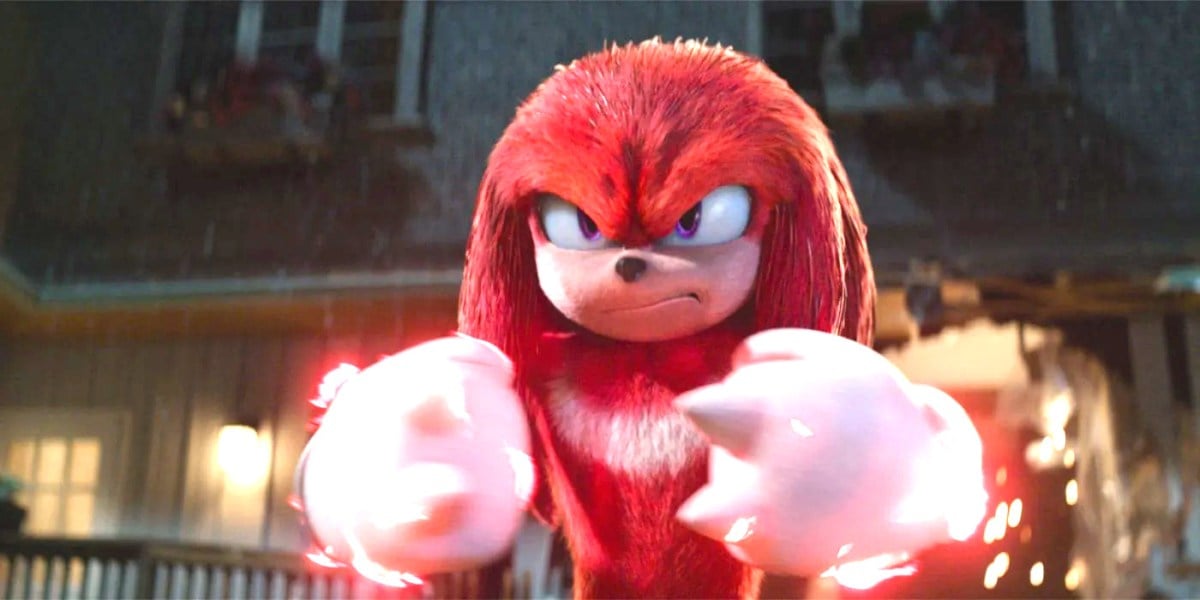
- More to Explore
- Series & Movies
Published May 4, 2023
What is a Galaxy Exactly?
The European Space Agency helps us understand the basics of our universe.

StarTrek.com
" Hear this, Picard, and reflect: 'All the galaxy is a stage .'" — Q, "Hide and Q"
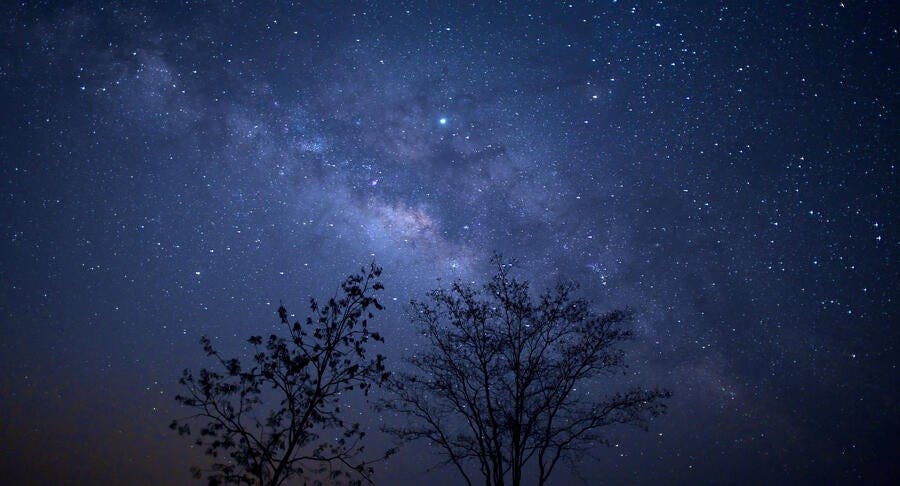
With one look up at the clear night sky from a dark spot (as in, not from a city), humans can see the overwhelming amount of stars visible to the naked eye. In some areas, the number of stars is so large that all you see is a fuzzy “milky” band across the sky. This band is the galaxy we live in — The Milky Way.
A galaxy is simply a mass of stars, gas, and dust, all held together by gravity, the same force that keeps people on the ground instead of floating away. Our galaxy is so large that light takes 100,000 years to cross from one side to the other. That leaves a lot of stars and planets still to be discovered for Star Trek in our galaxy alone!
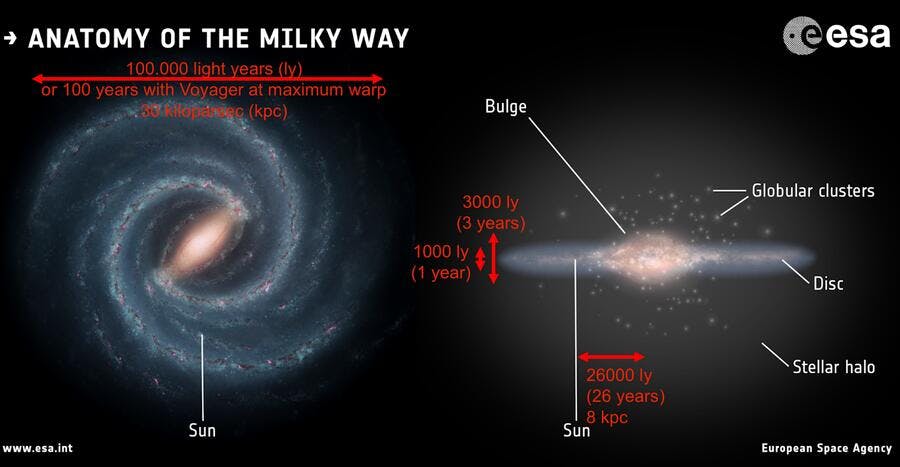
Anatomy of the Milky Way. The Milky Way in top (left) and side (right) view. Illustrated are the different components and the approximate position of our Sun in the galaxy. Adapted from ESA, to indicate the size in light years (and Voyager maximum warp travel time).
But the universe holds plenty of other galaxies aside from the Milky Way. Most of the nearby galaxies astronomers have observed can easily be classified into four groups: spiral galaxies, elliptical galaxies, irregular galaxies, and merging galaxies.
Spiral galaxies like the Milky Way, and our neighboring galaxy Andromeda, show clear disks and spiral arms and still actively form stars. Elliptical galaxies, on the other hand, are like smooth, squished spheres with very little structure or on-going star formation. Irregular galaxies like the two Magellanic Clouds are — you guessed it — irregularly shaped. And merging galaxies are simply some of the former three who are in the process of merging into one galaxy.
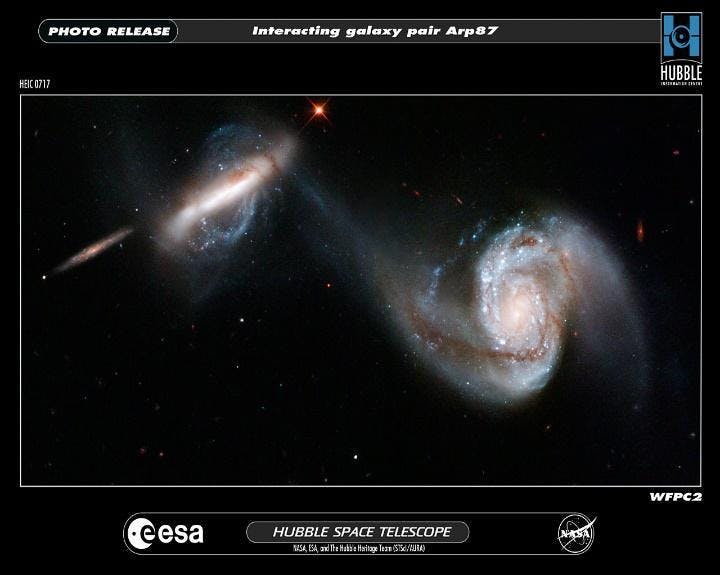
Interacting galaxies Arp87 in the Leo constellation.
NASA, ESA, and the Hubble Heritage Team
With the advent of larger telescopes, and the launch of space telescopes such as the Hubble Space Telescope astronomers were (and still are) able to explore more of the Universe and have looked beyond our neighboring galaxies. When Hubble was first pointed to observe a tiny, seemingly empty, piece of sky in the constellation of the Big Dipper (Ursa Major), nobody knew what to expect.

Illustration of the size of the deepest observations within the Hubble Space Telescope, labelled as XDF, in comparison to the apparent size of the full moon on the sky.
NASA, ESA, and Z. Levay (STScI), T. Rector, I. Dell'Antonio/NOAO/AURA/NSF, Digitized Sky Survey (DSS), STScI/AURA, Palomar/Caltech, and UKSTU/AAO
That tiny piece of empty sky, however, revealed more than 3000 galaxies!
When comparing these distant galaxies to those we see in the local universe, astronomers found that distant galaxies look very different. They are much more irregular, and often smaller and clumpy.
Since the speed of light is finite, the light from increasingly distant galaxies takes time to reach us. Consequently, the further away a galaxy is located from us, the further we look into the past. Take for example, the light from our own Sun; it takes eight minutes to reach the Earth. The Andromeda Galaxy, one of our close neighbors, is already 2.5 million light years away from the Milky Way. By observing distant galaxies, we observe how they appeared billions of years ago when the Universe was only a fraction of its current age of about 13.8 billion years. This makes observing the distant universe a great way to also study its history.
Astronomers still try to understand today, how the galaxies of the early universe grew, and how they evolved over time to become the smooth and regularly shaped Spirals and Ellipticals we observe in our cosmic neighborhood.
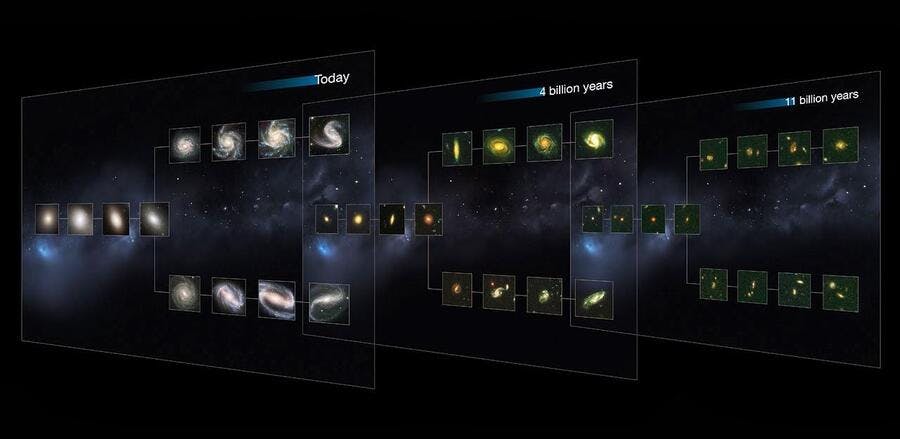
Three diagrams showing how galaxies at different ages of the universe looked like. On the left are galaxies as they appear today from elliptical to spiral galaxies sorted in the Hubble Tuning Fork Diagram. The middle figure shows galaxies as they appeared 4 billion years ago sorted into the same diagram. The right diagram shows the youngest galaxies from 11 billion years ago.
NASA, ESA, M. Kornmesser; the CANDELS team (H. Ferguson)
In order to find the very first galaxies in the universe, astronomers need new telescopes such as the James Webb Space Telescope (JWST). JWST is a collaboration between NASA, ESA, and the Canadian Space Agency to design and construct a successor to the Hubble Space Telescope.
Given the great strides that were made with Hubble Space Telescope observations, we can’t wait to see what new discoveries JWST will bring!
Get Updates By Email
This article was originally published on August 20, 2019.
- Space Exploration

Den of Geek
Star Trek Canon Just Changed the Way Its Galaxy Works
In Star Trek: Discovery Season 4, the edge of the Final Frontier just got a whole lot more interesting.

- Share on Facebook (opens in a new tab)
- Share on Twitter (opens in a new tab)
- Share on Linkedin (opens in a new tab)
- Share on email (opens in a new tab)
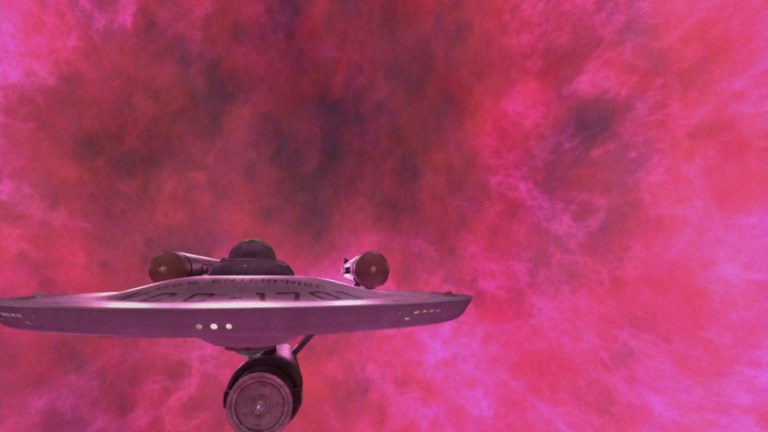
Spo i lers ahead for Star Trek: Discovery Season 4, Episode 10, “The Galactic Barrier.”
In Star Trek II: The Wrath of Khan , Bones prods Kirk by saying he knows his friend resents his desk job when he’d rather be “out there hoppin’ galaxies.” Despite the immortal perfection of this line, Kirk, Bones, and pretty much everyone within the Trek canon rarely actually hops galaxies at all. For all the boldly going where no one has gone before, leaving the galaxy is pretty uncommon within the various narratives of Trek. And yet, in the second TOS pilot, “Where No Man Has Gone Before,” the Enterprise left the galaxy. And now, in a game-changing episode of Discovery , “The Galactic Barrier,” Starfleet is trying that trick again. But this time, everything is different, even though some of it is kind of the same. Here’s what Discovery has changed about the Star Trek galaxy, literally…
In order to desperately contact the unknown species known only as “Ten-C ” Starfleet sends the USS Discovery to cross the galactic barrier. Whoever created the DMA (Dark Matter Anomaly) lives beyond the confines of our galaxy, which is something that Book and Tarka know, too. Basically, both Book’s ship and the USS Discovery are racing to the edge of the barrier, and in order to get through it without any bizarre side effects, each ship is getting doused with a bunch of programmable anti-matter. Tarka makes it clear that without this kind of extra protection, “nasty sections” of the Galactic Barrier can “eat through shields and fry your frontal cortex.” But why?
Tarka is Clearly Referencing Gary Mitchell
Tarka’s line about the barrier having the ability to “fry your frontal cortex,” can only be a reference to the very first Captain Kirk episode filmed, and the second pilot of Star Trek , ever, “Where No Man Has Gone Before.” In that episode, the USS Enterprise specifically is ordered to leave the galaxy, mostly to explore. This results in Gary Mitchell and Dr. Elizabeth Dehner getting their cortexes “fried,” and developing super-ESP powers as a result. Basically, Gary Mitchell becomes a kind of mash-up of Professor X and Magento and Kirk has to kill him with a rock. (Note, contemporary Star Trek just can’t stop and won’t stop referencing Gary Mitchell! Check out last year’s Lower Decks opener, “Strange Energies.”)
Ad – content continues below
So, it would seem that the programmable antimatter is the thing that will protect the crew from the “nasty sections” where somebody could potentially get unwanted Gary Mitchell powers. Tarka’s assertion about “nasty sections” also does double-duty. In a sense, it seems like it’s possible that only parts of the Galactic Barrier have pockets of “strange energies” that can make you go all Gary Michell. Still, the fear of going through this barrier is still pretty strong, because Starfleet has not done it in a very long time.
Was “Where No Man Has Gone Before” Classified?
Early in “The Galactic Barrier’,’ Admiral Vance mentions “they’re leaving the galaxy, we’ve never done that before.”
Now, the Enterprise-D unwillingly got thrown to other galaxies in “Where No One Has Gone Before” in TNG , and Kirk and the gang went through the barrier three times in TOS , once with the Gary Mitchell action in “Where No Man Has Gone Before,” again, in “By Any Other Name,” when a bunch of aliens from the Andromeda galaxy hijack the ship, and finally in “Is There In Truth No Beauty?” (Note: the aliens in “By Any Other Name” are oddly called the Kelvans, but there’s no connection between them and the USS Kelvin or the Kelvin Universe of the reboot films.)
So, what is Admiral Vance talking about? Presumably, he’s referring to the contemporary version of the Federation and Starfleet that has existed post-Burn in the 3180s and now, 3190s. It’s also possible that Kirk’s mission to the Galactic Barrier might have been partially classified. People in Lower Decks know about Gary Mitchell’s “strange energies,” but do they know everything about the Enterprise leaving the galaxy? Discovery canon tells us that Spock successfully made everything about the crew of DISCO classified, which seemed to stick well into the 32nd Century. So, who knows? Maybe part of Kirk’s OG barrier mission was not made common knowledge. After all, Kirk does falsify his logs at the end of that episode, leaving out details about how Mitchell and Dehner died.
Discovery’s new galactic barrier is still the old galactic barrier
For longtime fans, the appearance of the Galactic Barrier in DISCO’s “The Galactic Barrier” will be somewhat familiar. For one thing, it’s very pink which is exactly the same color it was in both classic and remastered TOS . Other than the crew’s newfound way to survive the barrier, the other big change is the various bubble-pockets that Stamets finds that help gets the ship across the barrier safely. Why were these little bubbles not around for Kirk? The answer is probably because, again, as Tarka mentioned, there are different sections of the barrier.
Because the classic Enterprise didn’t actually make it out of the galaxy, and in all cases, had to double back, Discovery is actually taking the larger Trek canon into new frontiers, literally. At the same time, the callback to TOS here is pretty clear: It may be now possible to make it out of the galaxy without dying or turning into a telepathic mutant. But it still isn’t easy. Star Trek: Discovery Season 4 airs its last three episodes over the next three Thursdays on Paramount+.

Ryan Britt is a longtime contributor to Den of Geek! He is also the author of three non-fiction books: the Star Trek pop history book PHASERS…
Quadrants in Star Trek: A Guide to the Different Regions of the Galaxy
- by Kingsley Felix
- October 31, 2023

Are you a fan of Star Trek ? If so, you may be familiar with the concept of quadrants in the show’s universe.
In Star Trek, the galaxy is divided into four main quadrants: Alpha, Beta, Gamma, and Delta.
Each quadrant contains different planets, species, and civilizations that the show’s characters explore and interact with.
This article will delve deeper into the concept of quadrants in Star Trek, exploring what they are, how they work, and why they matter in the context of the show.
In the Star Trek universe, the quadrants serve as a way to divide and organize the vast expanse of space.
Each quadrant contains a variety of star systems, planets, and other celestial bodies, as well as different species and civilizations.
The quadrants are named after the first four letters of the Greek alphabet, with Alpha being the closest to Earth and Delta being the farthest.
As the show’s characters travel through space, they often encounter new planets and species in different quadrants, leading to new adventures and challenges.
Understanding the concept of quadrants is essential to understanding the world of Star Trek.
By dividing the galaxy into four distinct regions, the show’s creators were able to create a vast and complex universe that is full of exciting possibilities.
Whether you are a die-hard fan or a casual viewer, learning more about the quadrants in Star Trek is sure to deepen your appreciation for this beloved sci-fi franchise.
Overview of Quadrants in Star Trek
In the Star Trek universe, the Milky Way galaxy is divided into four quadrants: Alpha, Beta, Gamma, and Delta.
These quadrants are defined by one meridian passing through the galactic core and a second one perpendicular to the first, which also passes through the galactic core.
Most of the action in Star Trek takes place in the Alpha and Beta quadrants, which are home to many significant planets like Earth, Vulcan, and Qo’noS.
The Gamma and Delta quadrants are less explored and are home to many alien species that are not commonly encountered in the Alpha and Beta quadrants.
The galactic coordinate system is used to map out the quadrants and other regions of space in the Star Trek universe.
Star Trek star charts and maps are available for fans to explore and learn more about the various quadrants and other regions of space.
Cartography plays an important role in the Star Trek universe, as it enables the characters to navigate through space and explore new worlds.
The Starfleet Corps of Engineers is responsible for creating and maintaining the maps and charts used by Starfleet vessels.
In summary, the quadrants in Star Trek are an important part of the Star Trek universe, and understanding them is essential for fans of the franchise.
The Alpha and Beta quadrants are the most explored and are home to many significant planets.
In contrast, the Gamma and Delta quadrants are less explored and are home to many alien species not commonly encountered in the Alpha and Beta quadrants.
Quadrants in Star Trek
The alpha quadrant.
The Alpha Quadrant is one of the four quadrants in the Milky Way Galaxy, as depicted in the Star Trek series.
It is home to many important planets, including Earth, Vulcan, and Bajor.
The United Federation of Planets is also located in this quadrant, making it a significant region in the Star Trek universe.
The USS Enterprise, under the command of Captain Kirk, frequently explored the Alpha Quadrant during its five-year mission.
The Enterprise NX-01, the first warp-five starship, also traveled extensively through this quadrant during the events of Star Trek: Enterprise.
Deep Space Nine, a space station located near the Bajoran wormhole, was a focal point of the Alpha Quadrant during the events of Star Trek: Deep Space Nine.
It served as a hub for trade, diplomacy, and conflict between the Federation, the Klingon Empire, and the Romulan Star Empire.
The Alpha Quadrant also features several important starbases, including Starbase 1 and Starbase 11.
These facilities provide support for Federation vessels and serve as strategic locations for defending against threats from the Klingons, the Romulans, and other hostile forces.
The Beta Quadrant
The Beta Quadrant is one of the four quadrants and is adjacent to the Alpha and Delta Quadrants.
It is home to various races, including the Vulcans and Klingons.
The Beta Quadrant has been featured in various Star Trek series and movies , including the original series, The Next Generation, Deep Space Nine, Enterprise, and Star Trek VI.
The USS Enterprise, Enterprise NX-01, and Deep Space Nine space station have all explored the Beta Quadrant.
Captain Kirk and his crew visited several planets in the Beta Quadrant, including Angel I, Talos IV, and Murasaki 312.
In The Next Generation, the Enterprise visited Vulcan and Andoria, both located in the Beta Quadrant.
The Beta Quadrant has been the setting for many important events in the Star Trek universe.
For example, the Romulan Star Empire is located in the Beta Quadrant, and the Dominion War between the Federation and the Dominion took place in the Alpha and Beta Quadrants.
The Gamma Quadrant
In the Star Trek universe, the Milky Way Galaxy is divided into four quadrants, and the Gamma Quadrant is one of them.
It is located adjacent to the Alpha Quadrant and the Delta Quadrant.
The Gamma Quadrant is home to various planets and civilizations, including the Dominion and the Breen Confederacy.
One of the most notable features of the Gamma Quadrant is the Bajoran Wormhole, which connects the Bajoran system in the Alpha Quadrant to the Idran system in the Gamma Quadrant.
This wormhole was discovered by the crew of Deep Space Nine, a space station located near the wormhole’s Alpha end.
The Dominion, a powerful empire that controls much of the Gamma Quadrant, is a major antagonist in the Star Trek universe.
The Dominion Space is vast, and it includes many different species that the Dominion has subjugated.
The Dominion War, which took place during the later seasons of Deep Space Nine, was fought between the Dominion and the Alpha Quadrant powers.
The Breen Confederacy is another major power in the Gamma Quadrant.
The Breen are known for their advanced technology and their mysterious appearance. They are also a key player in the Dominion War.
The Delta Quadrant
The Delta Quadrant is one of the four quadrants in the Milky Way Galaxy, adjacent to the Beta and Gamma Quadrants.
It is approximately 30,000 lightyears away from the United Federation of Planets.
The quadrant was prominently featured in the television series Star Trek: Voyager, as the USS Voyager was stranded there for seven years before returning to Earth.
The Delta Quadrant is home to many different species, including the Vidiians, Kazon, and Borg.
The Vidiians are a species that suffers from a disease called the Phage, which has ravaged their society and led them to resort to organ theft to survive.
The Kazon are a warrior race that is known for their conflicts with other species in the quadrant.
The Borg Collective, a powerful and dangerous cybernetic species, also has a significant presence in the Delta Quadrant.
In addition to the various species, the Delta Quadrant is home to many unique phenomena, such as the Caretaker’s Array, which was responsible for bringing Voyager to the quadrant.
The Borg also has a transwarp hub in the Delta Quadrant, allowing them to travel quickly throughout the galaxy.
Overall, the Delta Quadrant is a fascinating and dangerous region of space, full of unique species and phenomena that make it a popular destination for explorers and adventurers alike.
Kingsley Felix
Kingsley Ibietela Felix is a digital media publishing entrepreneur and founder of Krafty Sprouts Media, LLC. A 2-time African blogger of the year. Kingsley can be found researching, reading, watching football, playing games, discussing politics or creating great content.
Leave a Reply Cancel reply
Your email address will not be published. Required fields are marked *
Save my name, email, and website in this browser for the next time I comment.
Notify me of follow-up comments by email.
Notify me of new posts by email.
You May Also Like

How to Install Last Kingdom Kodi Build?
- by Editoral Team
- May 13, 2022

What Does Atmos Mean in Movies?
- October 14, 2023

10 Most Powerful Dragons in Movies and TV Shows
- by Eti-ima Udofia
- November 10, 2023

What Does PG Mean in Movies?
- July 21, 2023

Can You Watch Netflix on Nintendo Switch?
- October 28, 2023

15 Documentaries About Education on Netflix
- by Edidiong Abraham
- September 13, 2023
Discover more from The Bingeful
Subscribe now to keep reading and get access to the full archive.
Type your email…
Continue reading

Where No One Has Gone Before (episode)
- View history
When an experimental engine modification throws the Enterprise to the edge of the known universe, the crew must rely on a mysterious alien to guide the ship home.
- 1.2 Act One
- 1.3 Act Two
- 1.4 Act Three
- 1.5 Act Four
- 1.6 Act Five
- 1.7 Log entry
- 2 Memorable quotes
- 3.1 Production history
- 3.2 Story and script
- 3.3 Production
- 3.4 Cast and characters
- 3.6 Sets, props, and costumes
- 3.7 Special and visual effects
- 3.8 Continuity
- 3.9 Reception
- 3.10 Awards
- 3.11 Video and DVD releases
- 4.1 Starring
- 4.2 Also starring
- 4.3 Guest stars
- 4.4 Guest star
- 4.5 Featuring
- 4.6 Uncredited co-stars
- 4.7 Stand-ins
- 4.8 References
- 4.9 External links
Summary [ ]
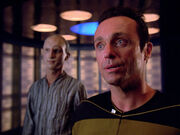
" Where is the captain, please? "
The USS Enterprise -D has rendezvoused with the Excelsior -class starship USS Fearless in order to take on a Starfleet propulsion specialist who will perform an upgrade on the ship's warp drive . He has already performed the upgrade on the Fearless , as well as the USS Ajax . Both these ships reported a notable increase in engine efficiency. Riker , however, is not convinced. He and Data have run a controlled test of the formulae that the engineer, Kosinski , has sent over, and found them to have no effect. Picard reasons that there's no harm in letting him come over and attempt the upgrade, especially since it doesn't change the hardware.
Riker is still skeptical, so Picard sends him to meet Kosinski when he beams aboard, along with his assistant . Riker, Troi , and Chief Engineer Argyle go to meet him in the transporter room . Kosinski is pompous and arrogant. He asks why the captain isn't there to meet him and demands to be taken to engineering . As he leaves, Troi comments to Riker that Kosinski is as he appears – loud and arrogant – but she can sense nothing from his assistant, not even his presence. Riker tells Troi to stay concerned, as the safety of the Enterprise may be entrusted to the two of them.
Act One [ ]
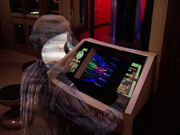
The Traveler "phases" out of reality
In engineering, Riker questions Kosinski about what he is going to do and asks him to explain his formulae. At first Kosinski resists, but eventually agrees to explain himself to Riker and Argyle. Meanwhile Wesley , who is also in engineering working on a school project, watches the assistant enter the formulae on a screen and suggests various changes to the inputs. When Kosinski is ready, Picard orders La Forge to take the Enterprise to warp 1.5.
As the ship accelerates, both Kosinski and his assistant enter various information. Suddenly a console alarm goes off and Kosinski shouts at the assistant, who has made an error. Outside the ship, the Enterprise 's engines suddenly engage with a massive burst of speed. The assistant grabs his console and starts to "phase" in and out of view, noticed only by Wesley.
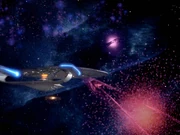
The Enterprise in M-33
On the bridge , La Forge tells the captain they are passing warp 10, and Data later says that their velocity is currently off the scale. The Enterprise hurtles through space, with phenomena whizzing past on the viewscreen at extremely high speed. Picard orders that they reverse engines (which Data comments on as having never been done at their current speed), and the Enterprise flashes out of warp. When asked for the ship's position, La Forge replies incredulously that they have traveled 2,700,000 light years .
They are now in the galaxy known as M-33 , and La Forge reports that at maximum warp it will take them over three hundred years to get home .
Act Two [ ]
Kosinski, Riker, and Argyle arrive on the bridge. Picard asks them what happened and Kosinski replies that he made "a mistake, a wonderful, incredible mistake". He is highly excited, claiming he has broken the warp barrier and that his name will go down in history. However, hearing the procedure that Kosinski used, Commander Riker isn't too convinced.
Down in engineering, Wesley is talking to the assistant in the chief engineer's office. He realizes that the assistant has been performing the "upgrades" all along, and that Kosinski is just a joke. The assistant tells him he means no harm to the ship or the crew – he simply made a mistake. He is exhausted now, and Wes offers to get his mother, but the assistant declines. Wes then says that from looking at the warp equations he thinks time and space and thought are all one thing. This surprises the assistant, who tells him never to say such a thing again "in a world that's not ready for it."
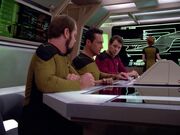
Kosinski prepares to take the Enterprise back
Picard orders Kosinski to bring them home, and they return to engineering. Wes tries to tell Riker about the assistant, but he won't listen. Kosinski sets up to return them home, and the Enterprise shoots into warp with another tremendous burst of speed. As they input the equations, it becomes obvious to Kosinski that it is not working. Then Riker sees the assistant as he starts to "phase" again and then collapses across the console.
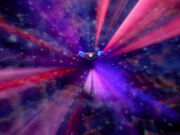
" This isn't working! "
Meanwhile, the Enterprise picks up incredible speed moving into untold measurements. On the viewscreen , spatial phenomena streak past faster and faster into indistinguishable light blurs. Picard orders full stop, and the Enterprise blasts out of warp once more, but they are certainly not back in their own galaxy. Outside the ship, clouds of cosmic dust and energy beings swim in a never-ending blue abyss. Data concludes that they must be at the edge of the known universe , " where none have gone before. "
Act Three [ ]
The Enterprise is now a billion light years from the Milky Way Galaxy in the other direction. Kosinski, Commander Riker, and the chief engineer come to the bridge to explain what has happened to the captain. Kosinski is struggling to explain everything and seems nervous yet persistently arrogant. In an effort to lighten the situation Kosinski decides to take a positive approach and says the Captain should be thrilled as an explorer because " in three centuries of space travel we've charted just 11 percent of our galaxy… and then we accomplish this! " But Captain Picard is more interested in getting home and Kosinski assures Picard that he can get them back. Picard asks his crew for suggestions and the crew goes back and forth about whether it's smart to continue to trust Kosinski. In frustration, Picard leaves for engineering.
The crew now starts to see things that cannot be there. Worf is at his station when he suddenly sees a Klingon targ in front of him, his childhood pet. Yar also sees it but it disappears just as quickly. Then she sees her pet cat and is back on the colony where she grew up, trying to avoid a rape gang . La Forge touches her, and she snaps out of it. When the turbolift doors open, Picard almost steps out into open space before throwing himself back inside. The doors open again, and he goes into a corridor. He meets two crewmen running away from some unseen pursuer. Further down the corridor, he sees an ensign in a cargo bay dancing ballet while elsewhere, another crewman is performing the first movement of Mozart's Eine Kleine Nachtmusik with a baroque-looking string quartet.
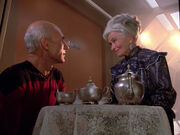
Picard speaks to his mother
The visions of thought seeming to become visual reality soon become more evident to the captain when he then sees his dead mother drinking tea in a corridor and starts to talk to her before he is interrupted by Riker. When he looks back, she's gone. Picard realizes he must get the crew's attention quickly to prevent their thoughts from causing a catastrophe. He immediately orders general quarters and goes to engineering. He tells the crew that they are in a region of space where thoughts become reality, and that they must try to subdue their thoughts.
In engineering, Dr. Crusher is examining the now unconscious assistant. Riker informs Picard that it was the assistant the whole time, not Kosinski. Crusher says the assistant is dying. Picard says he cannot, as he is their only way to get back home.
Act Four [ ]
The assistant is brought to sickbay , where Picard tells Crusher to wake him. They must leave this place before their own thoughts cause the ship to be destroyed. The assistant wakes and tells Picard that he is a Traveler from another plane of existence. He is traveling through their galaxy , observing them, using his knowledge of propulsion to get passage on Starfleet ships. Kosinski is just his cover. He meant no harm to the Enterprise . He tells them Humans shouldn't be here until their "far, far, distant future ," until they have learned to control their thoughts. Picard asks him if he can get them home. He tells him he will try.
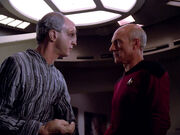
" He is just a boy… for now. "
He then asks for a private word with Picard. The others leave and the Traveler tells Picard that people like Wesley are the reason that he travels. He compares him to Mozart , only instead of music , Wes has, or will have, the ability to manipulate time, space, and thought. He urges Picard to encourage Wes, but not to tell him or Beverly any of this. He weakens, and Picard helps him up to Riker to go to engineering.
Picard hurries to the bridge, helping a crewman on the way to put out a fire he has created in a corridor.
Act Five [ ]
The Traveler sits at engineering's master systems display table starting to enter the necessary formula and Picard makes a ship-wide announcement, telling everyone to concentrate on getting back home and on the Traveler's wellbeing. They follow the same procedure as before: the ship jumps to warp 1.5 and the Traveler uses his powers to attempt to send them back. He starts to "phase" as before and the ship hurtles through space. Then the Traveler disappears altogether, and the Enterprise finds itself right back where it started.
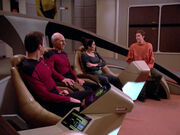
" If you don't mind, sir, I'd like to sit here for awhile. "
Mindful of the Traveler's advice, Picard calls Wesley to the bridge and thanks him for his part in their successful return. He then makes him an acting ensign , "for conduct in the true spirit and traditions of Starfleet." He instructs Riker to make out a duty roster for him and tells him to learn the ship and its operations from top to bottom. Then Wesley takes a seat on the bridge as the Enterprise resumes course.
Log entry [ ]
- Captain's log, USS Enterprise (NCC-1701-D), 2364
Memorable quotes [ ]
" Yes, but where is this place? " " Where none have gone before. "
" The safety of the Enterprise may be entrusted to those two. "
" How basic shall I be? "
" Data, what distance have we traveled? " " Two million seven hundred thousand light years, sir. " " I can't accept that. " " You must, sir. Our comparisons show it to be completely accurate. " " And I calculate that at maximum warp sir, it would take over… three hundred years to get home. "
" Perhaps you could call it the Kosinski scale. " " Why not? Yes, of course. Since I'm the one who has made the so-called warp barrier meaningless. "
" Captain, we're here. Why not avail ourselves of this opportunity for study? There is a giant protostar here, in the process of forming. No other vessel has been out this far. " " Spoken like a true Starfleet graduate. It is tempting, eh, Number One? "
" If you knew something, why didn't you tell anybody? " " He tried, twice. I didn't listen. "
" Well yes, this could seem like magic to you. " " No. No, it actually makes sense to me. Only the power of thought could explain what has been happening. "
" Thought is the essence of where you are now. "
" He and a few like him are why I travel. "
" You're not involved in this decision, boy! "
" Please don't interrupt me, Wesley. "
" It's a Klingon Targ, from home, from when I was a child. " " So you're telling me that that thing's a kitty-cat?! " " Yes. I suppose you could call it that. "
" Should I send for Dr. Crusher? " " Why? Is someone ill? "
Background information [ ]
Production history [ ].
- First story premise: 16 December 1986
- Gene Roddenberry greenlights story development: 17 December 1986
- Second draft story outline: 13 February 1987 [1]
- Original story outline: 17 February 1987 ( Creating the Next Generation )
- Second draft outline: 24 March 1987 ( Creating the Next Generation )
- First draft script: 17 April 1987 ( Creating the Next Generation )
- First draft script: 20 May 1987
- Five-page memo of script notes by Gene Roddenberry: 27 May 1987
- Script draft: 22 June 1987
- Revised script draft: 15 July 1987
- Final draft: 27 July 1987
- Revised final draft script: 30 July 1987
- Filmed: 5 August 1987 – 13 August 1987
- Score recorded at Paramount Stage M : 25 September 1987 ( Star Trek: The Next Generation - The Ron Jones Project liner notes [2] )
- Premiere airdate: 26 October 1987
- UK premiere airdate on BBC2 : 17 October 1990

Story and script [ ]
- This story was loosely based on the Pocket TOS novel The Wounded Sky , also written by one of this episode's writers – Diane Duane . Producer Maurice Hurley did numerous uncredited rewrites on Duane and Michael Reaves ' original script. ( Star Trek: The Next Generation Companion (2nd ed., p. 36))
- Diane Duane has published the second draft versions of the episodes original pitch (X) and outline (X) on her website. Of the production process, she writes: " We turned in the first-draft script and waited a couple of weeks for the notes – heard nothing, called the TNG office, and discovered that we had been "cut off" at first draft, and the script given to someone else for rewrite. (…) We were unclear about the reasons for this particular cutoff for a long, long time – nearly ten years. (…) (W)e'd unwittingly become caught up in interoffice politics. One member of production staff got up another one's nose, and as a result was chucked out – and (though they weren't told what was going on) so were all the writers associated with that production staffer. (…) At any rate, after the rewrite, in the shooting script for the episode, only two elements of our original (besides the general idea) remain: the scene with Picard and his mother (which was Michael's), and the shot of Picard almost falling out of the turbolift into open space (which was mine)." Notably, the characterization of Kosinki and the addition of The Traveler were entirely products of the rewrite. ( "Out of Ambit" at DianeDuane.com , October 8, 2006)
- In the original teleplay, Kosinski was responsible for both the warp effect and the accident. He also had a son, who felt his father was more interested in his work than in him. The hallucinations were much more bizarre than in the final episode: Jack R. Crusher appeared to Picard and Beverly, and the Enterprise appeared inside a "cosmological egg". When the starship escaped, it exploded and caused the birth of a new universe. As a sort of " Biblical pun", the Enterprise spends six days "missing", and Picard orders the next day to be a day of rest. ( Star Trek: The Next Generation Companion (2nd ed., p. 36))
Production [ ]
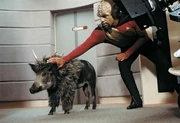
Michael Dorn on set with wild boar Emmy-Lou
- This episode marks the debut of Rob Bowman as a Trek director. He later went on to direct twelve more episodes of The Next Generation . Daniel Petrie was originally hired to direct the episode, but quit when he was approached to direct the film Cocoon: The Return . Producer Robert H. Justman said that hiring twenty-seven-year-old Bowman to direct this segment was one of his proudest achievements on the show. Bowman was terrified, trying to make a good impression on his first assignment, and overcome any doubts of his youth. ( Star Trek: The Next Generation Companion (2nd ed., p. 36)) Concerning how he prepared to film the installment, he recalled, " I spent about twenty days before my first episode walking through those sets, and on Saturdays and Sundays, eight hours a day, just sitting and looking. " ( The Fifty-Year Mission: The Next 25 Years , p. 117)
- While shooting the scene in this episode where Riker tells Picard, " It wasn't him, it never was; it was his assistant, " Jonathan Frakes had some difficulty saying the line and eventually could not say it without breaking into a laugh. According to Patrick Stewart , the event soon spread "like a bushfire" throughout the set, to the point where The Next Generation 's sound mixer, Alan Bernard , had to wheel his sound cart off the set as he also could not stop laughing. Stewart later recalled this story to Frakes in 2012 , at the Calgary Comic-Con Expo, where he still couldn't say the phrase very well. ( TNG Season 1 DVD special feature "Memorable Missions"; [3] )
- La Forge's line about the ship passing warp 10 was looped in post-production, and the line as it was originally spoken ("warp 5" instead of "warp 10") is featured in the episode's trailer.
- Worf's targ was played by a Russian wild boar named Emmy-Lou . Robert Justman recalled, " That pig smelled horrid. A sweet-sour, extremely pungent odor. I showered and showered, and it took me a week to get rid of it! " ( Star Trek: The Next Generation Companion (2nd ed., p. 36))
Cast and characters [ ]
- This episode marks the first appearance of Eric Menyuk 's The Traveler . Menyuk was a finalist for the role of Data and was given the role here as a consolation prize. ( Star Trek: The Next Generation Companion (2nd ed., p. 36)) He reappears in " Remember Me " and " Journey's End ".
- This episode marks the first appearance of Dennis Madalone in a Star Trek production. Madalone performed stunts in several more first and second season episodes and started to work as Stunt Coordinator beginning with the third season . He also worked as stunt coordinator on Star Trek: Deep Space Nine and Star Trek: Voyager .
- The piece of music played by the string quartet in this episode is Mvt. 1, "Allegro", from Mozart 's Eine kleine Nachtmusik , K. 525.
- When Picard meets his mother, there is also an unidentified recurring (until episode 17 " When The Bough Breaks ") melody.
- The episode's score, composed and conducted by Ron Jones , was recorded on 25 September 1987 at Paramount Stage M . ( Star Trek: The Next Generation - The Ron Jones Project liner notes [4] ) The complete episode score, totalling 21 minutes 15 seconds, appears on Disc One of the Star Trek: The Next Generation - The Ron Jones Project collection.
- The musical piece to which the ballerina is dancing is titled " Waltz of the Chocolate Donut ".
Sets, props, and costumes [ ]
- The master systems display (nicknamed the "pool table") in main engineering was used for the first time in this episode. However, as " The Last Outpost " was broadcast before this episode, though produced later, the table is first seen in that episode. Main engineering also features many chairs and benches never seen again.
- The two vertical light panels flanking the wall mounted master systems display in main engineering are illuminated green (which is only visible in the color-corrected HD release; the original mistakenly shows them being yellow), an effect only seen in this episode.
- For the last time until Star Trek Generations a corridor leading to main engineering, which is located directly behind the office, is seen. Normally, that opening is closed by a fake wall with LCARS interfaces, which is only removed when main engineering is redressed as a corridor lounge.
- Among the items from this episode which were sold off on the It's A Wrap! sale and auction on eBay is a pair of special effects make-up hands for The Traveler . [5]
Special and visual effects [ ]
- Visual effects artist Robert Legato recalled that he had to devise the special effects for the "end of the universe" based on vague directions in the script. He noted, " I did it simply, at home in my basement, with water. I had always noticed water reflections on the wall, so I shot multiple layers of that through dissolved Mylar bits. It was peculiar and bizarre. And I used little suspended moving Christmas tree lights for the little blinkies. " ( Star Trek: The Next Generation Companion (2nd ed., p. 37)) Legato also described the creation of these effects in the TNG Season 5 DVD special feature "Departmental Briefing Year Five" ("Visual Effects").
- Director Rob Bowman recalls, " The effects in that episode were, at times, extremely frustrating and complex, so I didn't know what they were going to look like. It's tough to have people react to something that even I can't identify. Many special FX are just vaguely discussed during shooting and only finalized during post-production. So at times, that was difficult. " ("Rob Bowman – Director of a Dozen", The Official Star Trek: The Next Generation Magazine issue 10 , p. 15)
Continuity [ ]
- Wesley Crusher is given a field commission of acting ensign in this episode.
- Footage of the USS Fearless traveling next to the Enterprise -D was previously seen in " Encounter at Farpoint " (sans Deneb IV in the background), where the Excelsior -class vessel represented the USS Hood .
- When the illusory string quartet disappears, the crewman is sitting at a table with a small bottle and a glass on a tray. As both were originally created for Star Trek III: The Search for Spock , the bottle features the Federation logo of that time.
- During Picard's speech towards the end of the episode, a crewmember is seen looking at an LCARS interface with directions to Holodeck 4J. This is the same graphic that was seen in " Encounter at Farpoint " when Commander William T. Riker was looking for the holodeck.
- Upon arrival at M-33, it is mentioned that a return trip to the Federation, using normal warp drive, through two galaxies, would take three hundred years. The time given is the same as that of the Kelvan 's trip in TOS : " By Any Other Name " from the Andromeda Galaxy .
- This is the only episode where Picard says "cease red alert" to stand down red alert.
- Despite The Traveler's admonition to Picard never to discuss their conversation regarding Wesley with either him or his mother, in " Journey's End ", both Beverly and Wesley discuss that conversation as if they had full and open knowledge of it.
- In this episode, Kosinski states that in "three centuries of space travel, we've charted just 11% of our galaxy." In " The Dauphin ", set one year later, Wesley notes an increased figure of 19%.
- The scene where Picard's mother appeared and offered him tea and a chat would be brought up in PIC : " Hide and Seek " where it was revealed that Yvette suffered from severe mental illness that she refused to treat, and her struggle with it would eventually lead Yvette to commit suicide in the 2310s , something which Picard blamed himself for as a child. This led him to often imagine what his mother would've been like had she survived to an older age - a thought which here becomes reality for a moment.
Reception [ ]
- Maurice Hurley commented, " Everything about that episode worked. That's when everybody started to hit their stride a little bit. The casting was good, the Traveler was wonderful, the optical effects were excellently outstanding. You could feel things starting to come together. " ( Captains' Logs: The Unauthorized Complete Trek Voyages , p. 158)
- Director Rob Bowman remembers, " It was a very enlightening script, the likes of which you don't very often see on television. I felt very fortunate that it was such a great script, but, personally, I was terrified because it was my first episode and I wanted to make a good impression. I worked on that show every day I had the script, which, including the shooting, was like twenty days for me. " ("Rob Bowman – Director of a Dozen", The Official Star Trek: The Next Generation Magazine issue 10 , p. 13)
- A mission report titled "Where None Have Gone Before" by Robert Greenberger was published in The Official Star Trek: The Next Generation Magazine issue 3 , pp. 22-26.
- This episode was nominated for an Emmy Award in the category Outstanding Sound Mixing for a Drama Series in 1988 . The nominees were Sound Mixers Chris Haire , Doug Davey , Jerry Clemans , and Alan Bernard .
Video and DVD releases [ ]
- Original UK VHS release (two-episode tapes, CIC Video ): Volume 3 , catalog number VHR 2273, 2 July 1990
- UK re-release (three-episode tapes, Paramount Home Entertainment ): Volume 1.2, catalog number VHR 4643, 4 May 1998
- As part of the TNG Season 1 DVD collection
- As part of Star Trek: The Next Generation 25th Anniversary Event
- As part of the TNG Season 1 Blu-ray collection
Links and references [ ]
Starring [ ].
- Patrick Stewart as Captain Jean-Luc Picard
- Jonathan Frakes as Commander William T. Riker
Also starring [ ]
- LeVar Burton as Lt. Geordi La Forge
- Denise Crosby as Lt. Tasha Yar
- Michael Dorn as Lt. Worf
- Gates McFadden as Doctor Beverly Crusher
- Marina Sirtis as Counselor Deanna Troi
- Brent Spiner as Lt. Commander Data
- Wil Wheaton as Wesley Crusher
Guest stars [ ]
- Stanley Kamel as Kosinski
- Eric Menyuk as The Traveler
- Herta Ware as Yvette Picard
Guest star [ ]
- Biff Yeager as Argyle
Featuring [ ]
- Charles Dayton as Crewmember
- Victoria Dillard as Ballerina
Uncredited co-stars [ ]
- James G. Becker as Youngblood
- Byron Berline as command division officer
- Darrell Burris as operations division officer
- Dexter Clay as security officer
- Jeffrey Deacon as command division officer
- Emmy-Lou as Klingon Targ
- Nora Leonhardt as science division ensign
- Dennis Madalone as science division crewman
- Tim McCormack as Bennett
- Lorine Mendell as Diana Giddings
- Natalia Silverwood as civilian
- Command division officer
- Command division officer in a skant
- Eight operations division crewmembers
- Female command division officer
- Female science division crewmember
- Four rape gang members
- Male civilian
- Tasha's cat
- Three string quartet musicians
- Transporter chief (hand)
- Transporter chief (voice)
Stand-ins [ ]
- James G. Becker – stand-in for Jonathan Frakes
- Darrell Burris – stand-in for LeVar Burton
- Dexter Clay – stand-in for Michael Dorn
- Jeffrey Deacon – stand-in for Patrick Stewart
- Susan Duchow – stand-in for Denise Crosby
- Nora Leonhardt – stand-in for Marina Sirtis
- Tim McCormack – stand-in for Brent Spiner
- Lorine Mendell – stand-in for Gates McFadden
- Guy Vardaman – stand-in for Wil Wheaton
References [ ]
2064 ; 2415 ; 26th century ; ability ; acting ensign ; advice ; age ; Ajax , USS ; alien ; answer ; application ; arrogance ; assignment ; assistant ; astonishment ; attention ; auxiliary panel ; ballet ; battle stations ; Bessel function ; billion ; bridge ; calculation ; candle ; cat (" kittycat "); cello ; century ; chance ; chief engineer ; child ; choice ; commissioned officer ; computer ; concept ; concern ; controlled test ; conversation ; crisis ; cup ; curiosity ; danger ; day ; definition ; destination ; disposition ; distance ; distant future ; doctor ; door ; drill ; duty schedule ; earring ; Eine kleine Nachtmusik ; end of the universe ; energy ; ensign ; entrance application ; error ; exhaustion ; existence ; explanation ; explorer ; explosion ; fact ; fatigue ; Fearless , USS ; flashlight ; fire ; fraud ; friend ; French language ; full alert ; galaxy ; Galaxy -class decks ; general quarters ; genius ; graduate ; harm ; heading ; hearing ; history ; Holodeck 4J ; home ; Human ( mankind ); humanoid ; hundred ; hypospray ; idea ; ignorance ; information ; intermix formula ; joke ; Klingon ; Kosinski scale ; lens ; library ; lifeform ; life sign ; light year ; log entry ; luxury ; magic ; main computer ; malfunction ; maximum warp ; mechanics ; medical problem ; medical tricorder ; Milky Way Galaxy ; million ; minute ; minimalist ; mistake ; month ; Mozart, Wolfgang Amadeus ; music ; name ; nature ; navigation sensor ; number one ; observation ; " on the double "; opportunity ; order ; outer rim ; painting ; parameter ; percent ; performance ; pet ; physiology ; place ; power ; pronunciation ; propulsion ; propulsion expert ; protostar ; puzzle ; question ; rank ; rape gang ; rate of speed ; reality ; reason ; reciprocal course ; record ; red alert ; rendezvous ; report ; retroactive course ; risk ; safety ; " scared to death "; school project ; science vessel ; scientific discovery ; screen ; sewer ; sickbay ; sleigh ride ; space ; spaceflight ; specs ; speed ; Starfleet ; Starfleet Academy ; Starfleet Command ; straight line ; strength ; stress ; string quartet ; study ; subspace ; subspace field compensator ; subspace message ; symbol ; symphony ; targ ; target acquisition ; Tau Alpha C ; tea ; teacher ; term ; theory ; thing ; third person ; thought ; thousand ; threat ; time ; toe shoes ; trading ; tradition ; transportation ; Transporter Room 3 ; traveler ; Traveler, The ; Triangulum Galaxy ( M-33 ); truth ; turbolift ; Turkana IV ; tutu ; unconsciousness ; understanding ; universe ; unnamed plants ; velocity ; vessel ; viola ; violin ; visitor ; VISOR ; Waltz of the Chocolate Donut ; warp barrier ; warp drive ; warp drive engine ; warp drive system ; warp field ; warp formula ; warp speed ; warp speed experiment ; week ; wig ; Worf's pet targ ; year
External links [ ]
- "Where No One Has Gone Before" at StarTrek.com
- " Where No One Has Gone Before " at Memory Beta , the wiki for licensed Star Trek works
- " Where No One Has Gone Before " at Wikipedia
- " Where No One Has Gone Before " at the Internet Movie Database
- " "Where No One Has Gone Before" " at MissionLogPodcast.com , a Roddenberry Star Trek podcast
- "Where No One Has Gone Before" script at Star Trek Minutiae
One Of The Most Important, And Undersung, Figures In Star Trek History Has Passed Away
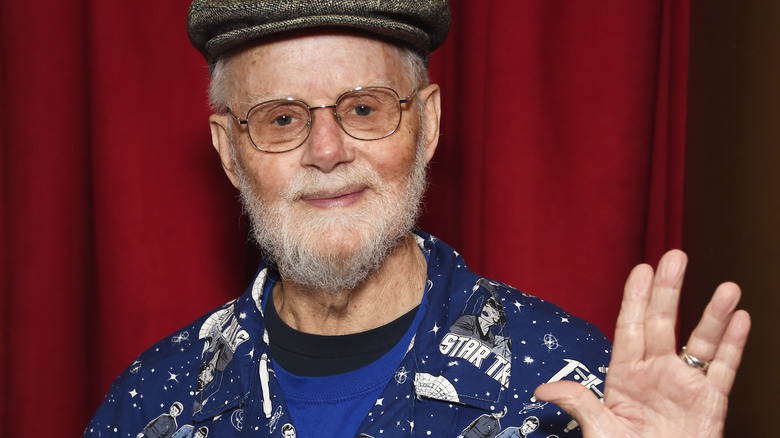
John Trimble, longtime Trekkie and fan advocate, passed away on April 19, 2024. He was 87 years old. The world of "Star Trek" owes the man a debt.
Bjo and John Trimble were Trekkies from the very start. Indeed, the married couple were early adopters of "Star Trek," becoming enamored of the series before the word "Trekkies" had even become a part of the fan lexicon. Trimble met Betty JoAnn Conway through the fan networks first set up by genre-movie ultra-booster Forrest J Ackerman , having first conversed while hiding underneath a grand piano at Ackerman's house during a party. They were married for 64 years.
Back in the 1960s, sci-fi and fantasy fan networks were achieved solely through the mail, and Trekkies would communicate almost exclusively through letters columns printed in the backs of sci-fi magazines (a model first invented by Hugo Guernsback back in 1926). More enterprising fans would author and print their own fanzines, which they would mail to other fans, or drive around town and distribute by hand.
The Trimbles were among those enterprising fans. They loved "Star Trek," and had made themselves familiar with the goings-on in NBC production offices, just so they could keep an eye on their favorite show. When the Trimbles learned that ratings were flagging at the end of the show's second season — in March 1968 — Bjo and John launched a letter-writing campaign to keep the series on the air. They wrote a letter explaining the situation, printed out 150 copies on an old mimeograph machine, and mailed them out to all the most influential fans in their circle. Each one of them was asked, chain-letter style, to send out ten copies of the letter to ten others, those ten would print out ten more, and so on.
'There ought to be something we could do about this'
Thanks to Trimble's efforts, "Star Trek" was renewed for a third season, and subsequently put into eternal syndication.
John's wife Bjo led the charge on the letter-writing campaign, but she credits John for first having the idea and helping to facilitate it . Talking to Sci-Fi Radio last year , Bjo said:
"The whole 'Save "Star Trek"' campaign was John's fault. We had visited the Trek set, about when word sifted down that the show would be canceled at the end of the second season. So we watched actors do their stuff beautifully in front of the camera, then slump off looking depressed. On our way home, John said, 'There ought to be something we could do about this!'"
Bjo and John instantly began formulating their plan, and called "Star Trek" creator Gene Roddenberry as soon as they arrived home (naturally, they had Roddenberry's personal phone number). They asked Roddenberry if they should start a letter-writing campaign, and the Great Bird of the Galaxy gave a thumbs-up. The Trimbles had an uphill battle rescuing "Star Trek," as, to their recollection, only 12-year-olds and cretins watched "Star Trek." But the pair also knew that venerable authors like Isaac Asimov were fans.
When coverage of their campaign made it into newspapers, Bjo received most of the credit, she recalled, as 1960s news writers hooked into the "housewife makes good" angle, coloring it as a Women's Lib story. Bjo wanted to point out that John was just as instrumental in the campaign, and that he wasn't just "the husband."
There would be no Star Trek conventions without Bjo and John Trimble
"To my sorrow," Bjo continued, "John has seldom gotten even the fan credit he so well deserves for his part in making the 'Star Trek ' we know now a reality for all of fandom."
John sat on the board of directors of the Society of Creative Anachronisms, an early fan group, and his involvement in the community led to the commercial enterprise of the types of fan conventions that continue to this day. Sci-fi conventions were nothing new, as the World Science Fiction Convention, or Worldcon, had been held annually since 1939. But Bjo joined the Los Angeles Science Fiction Society in the late 1950s, and became involved with organizing elements of Worldcon, and in 1958, Bjo and John were responsible for putting together the Worldcon Futuristic Fashion Show, which became a very profitable costume presentation in the fan community. In the mid-1960s, the Trimbles displayed early versions of the "Star Trek" uniforms before the series premiered.
It was through the strength and activism of Bjo and John Trimble that sci-fi conventions would continue to flourish. By 1972, other sci-fi fans took their lead and began organizing conventions for "Star Trek" specifically . The very first Trek convention was held in New York on January 21, 1972. Bjo and John launched the ship, and a new generation of captains sailed them into the stars.
John was also enlisted in the Air Force, and performed helicopter rescues during the Korean War. In a letter posted on Facebook , Trimble's daughter Lara said that "One of his best memories was when the squadron rescued visiting US Boy Scouts stranded on a mountain in Taiwan. It took multiple trips to get all hands safely home." He was a hero for sci-fi fans, but he was already a hero in real life.
Rest in peace, John Trimble.
Screen Rant
Star trek is officially redefining what "where no one has gone before" actually means.
The phrase "where no one has gone before" has been a rallying cry for Star Trek fans for years, and now it has taken on an awesome new meaning.
- The iconic catchphrase "where no one has gone before" gets an epic new meaning in Star Trek #19, by Jackson Lanzing, Collin Kelly and Megan Levens.
- Captain Sisko and his crew are heading into the Pleroma, Star Trek's newly revealed "realm of the gods," prompting Doctor Crusher to call it "where no one has gone before."
- One of Star Trek's key tenets is that humanity can evolve and transcend, and the journey to the Pleroma is the first step in this quest.
For generations of Star Trek fans, the catchphrase “where no one has gone before” has been an iconic call to adventure, but now it has taken on a whole new meaning. In Star Trek #19, the crew of the Theseus is heading to the Pleroma, a mysterious new realm that promises great adventure–and great peril. As they prepare for the hazardous journey, the franchise’s catchphrase takes on new layers.
Star Trek #19 is written by Jackson Lanzing and Collin Kelly and drawn by Megan Levens. T’Lir, the enigmatic Vulcan, has been revealed to be the last of the Organians and has charged Sisko and company with a new mission: travel to the Pleroma and help fix the damage Kahless has caused. Sisko is wary of the Pleroma, having been forbidden to travel there by the Prophets.
He discusses the impending journey with Doctor Crusher, and she refers to the Pleroma as “where no one has gone before.”
For Over 60 Years, Star Trek's Opening Monologue Has Perfectly Set the Show's Tone
It has undergone several changes over the years.
The catchphrase “where no one has gone before” is one of the most memorable in pop culture. Part of a larger opening monologue, the phrase has undergone a few alterations. When Star Trek premiered in 1966, the line read: “where no man has gone before.” When Star Trek: The Next Generation debuted in 1987, it was updated to the much better and more inclusive “where no one has gone before.” This has since become, with a few exceptions, the standard across the franchise, still recited in both the Abrams Kelvin-timeline movies and Strange New Worlds.
In the pilot episode of Star Trek: Enterprise , it was revealed Zefram Cochrane coined the phrase "where no man has gone before."
Star Trek is a story of exploration and discovery, and this catchphrase perfectly sums up this philosophy. Every week, the crews of the various Star Trek shows encounter bizarre alien life forms and awe-inspiring stellar phenomena. Ships like the Enterprise, Voyager or Discovery expanded the frontiers of knowledge while keeping the galaxy safe. Star Trek’s opening monologs set the tone perfectly for the incredible stories that follow. Now, on the eve of one of the biggest discoveries in galactic history, it is taking on a new meaning.
Star Trek Already Confirmed Its Real Final Frontier (& It's Not Space)
Star trek is about more than just exploring space--it's about exploring the human heart too, the pleroma may hold the key to humanity's evolution.
Yet, Star Trek is more than just stories of the exploration of space, but also expanding the potential of humanity . In addition to featuring a future where strife and war have been eliminated, the franchise has shown humanity has great potential, something Q alluded to in the Star Trek: The Next Generation episode “All Good Things.” Humanity will one day be like gods, and the Theseus’ journey to the Pleroma is the first step along the way. The Pleroma opens new possibilities in the Star Trek franchise, giving new meaning to “where no one has gone before.”
Star Trek #19 is on sale now from IDW Publishing!
Early Star Wars Day Lego deal: $130 off UCS Razor Crest
This is the way to celebrate Star Wars Day in style, with the 6187-piece Lego Ultimate Collector Series Razor Crest, now $130 off

If you're looking for a Lego Star Wars deal to celebrate Star Wars Day (May 4) then you might want to consider treating yourself to the behemoth 6187-piece UCS Razor Crest ship, which is now $130 off on Amazon .
Lego UCS Razor Crest is $130 (22%) off on Amazon ahead of Star Wars Day.
There's a lot to like about this set. Firstly, it's hard to find and a lot more expensive on Lego's website. It's a pretty awesome size too, so it stands out as a display model and if you take a closer look, you'll find stunning, authentic detail. Details include removable engines and cockpit, a carbon freezing chamber, a weapons cabinet, two side hatches and a cargo compartment. It also features five minifigures and figures including Mando and Grogu . It's the ultimate set for any fan of Lego and The Mandalorian.
If you're looking to celebrate Star Wars Day with a new Lego set, but don't want to spend as many credits as you'll need for this monster of a set, you should check out our guides to the best Lego Star Wars sets , Lego Star Wars deals , or take a look at Lego's Emperor's Throne Room Diorama , which is also on sale.

Lego UCS Razor Crest Was $599.99 now $469.99 on Amazon .
Save $130 on a 6187-piece juggernaut of a Lego Star Wars Set. It stands at over 9 inches (24 centimeters) high, 28 inches (72 centimeters) long and 19.5 inches (50 centimeters) wide. Details include removable engines, a carbon freezing chamber and a weapons cabinet. Figures/minifigures include Mando and Grogu.
There's no denying the price tag, but, there are few Lego Star Wars sets that can match this one for size, number of pieces and detail. Its dimensions measure over 9 inches (24 centimeters) high, 28 inches (72 centimeters) long and 19.5 inches (50 centimeters) wide. So, it will stand out wherever you choose to display it. Also included are minifigures of Mando, the Mythrol and Kuiil as well as figures of Grogu in his floating pram and a buildable Blurrg. With detachable features and a detailed interior, this does offer playable options although we think this is a stand-out display model.
Lego will be bringing out exclusive offers to its website from May 1 to celebrate Star Wars Day but, if you want to beat the crowds, this could be a timely offer worth considering. Of course, you'll probably need more than a day to build this set, but Amazon says it will be delivered ahead of May 4, which is handy if you want a head start. May the fourth be with you when building this set and remember, to celebrate the big day in style, this is the way.
Key Specs: 9 inches (24 centimeters) high, 28 inches (72 centimeters) long and 19.5 inches (50 centimeters) wide. Mando, The Mythrol and Kuiil figures as well as Grogu and buildable Blurrg minifigures. Removable engines, a carbon-freezing chamber, a weapons cabinet and a detachable escape pod with space for a minifigure.
Get the Space.com Newsletter
Breaking space news, the latest updates on rocket launches, skywatching events and more!
Consensus: This set is a bit of a monster and not for the casual or faint-hearted Lego fan. However, the result will be outstanding. A model that will impose wherever you display it and still impress when you take a closer look and discover the finer details.
Buy if: You're a collector, a fan of The Mandalorian or you want an epic way to celebrate Star Wars Day.
Don't buy if: You're on a budget, or if you're looking for something a bit smaller and quicker to build.
Check out our roundups of the best discounts and deals on telescopes , binoculars , cameras , star projectors , drones , Lego and much more.
Join our Space Forums to keep talking space on the latest missions, night sky and more! And if you have a news tip, correction or comment, let us know at: [email protected].

STAFF WRITER, E-commerce — Alex joined Space.com in June 2021 as staff writer covering space news, games, tech, toys and deals. Based in London, U.K. Graduating in June 2020, Alex studied Sports Journalism in the North East of England at Sunderland University. During his studies and since his graduation, Alex has been featured in local newspapers and online publications covering a range of sports from university rugby to Premier League soccer. In addition to a background in sports and journalism, Alex has a life-long love of Star Wars which started with watching the prequel trilogy and collecting toy lightsabers, he also grew up spending most Saturday evenings watching Doctor Who.
Contact Alexander: E-Mail Twitter
Pre-Star Wars Day Lego deal: 20% off the Emperor's Throne Room
Solar eclipse 2024: Live updates
US Space Force picks Rocket Lab for 2025 Victus Haze space domain awareness mission
Most Popular
- 2 Wow! Private space-junk probe snaps historic photo of discarded rocket in orbit
- 3 Laser on NASA's Psyche asteroid probe beams data from 140 million miles away
- 4 Satellites spot clusters of 'spiders' sprawled across Mars' Inca City (photo)
- 5 5 sci-fi movies that weren't great but still deserve a sequel

Was Star Trek: Lower Decks cancelled because it's an adult-themed cartoon?
S tar Trek have ventured into animation three times in the past fifty-one years with Star Trek: The Animated Series debuting in 1973, Star Trek: Lower Decks debuting in 2020, and Star Trek: Prodigy making its first appearance in 2021. The Animated Series was cancelled after two seasons with Prodigy being cancelled after one before Netflix picked it up. The recent cancellation of Lower Decks after season five, though, has caused some speculation about the reasons behind it and if it had anything to do with the style of the series.
TV Fanatic speculates that Lower Decks may be ending because of its adult-themed humor and slapstick comedy with the writer, Jason Collins, adding that the cancellation "may follow the trend of networks and streaming services canceling adult-themed cartoons for various reasons. "
It's true that Lower Decks offered humor that the other Trek series didn't, but the newer series have started using language that the older shows didn't as well. That's just a sign of the times, so to speak. Way back when, strong language couldn't be used on network television, but streaming opens up more possibilities. It's not usual to hear four letter words and jokes that you might not say in a crowded room.
But Lower Decks creator Mike McMahan and executive producer Alex Kurtzman both called five seasons a miracle in the current landscape of shows. Star Trek: Discovery was cancelled after five seasons as well, and so it stands to reason that the ending of Lower Decks is more due to current Star Trek practices.
Yes, there are fans who don't like Lower Decks' brand of humor or its focus on comedy rather than drama . There are also fans that do not like to hear some of Star Trek's greats like Patrick Stewart dropping the F-bomb. But unwanted curse words and questionable jokes haven't dissuaded all the viewers. If that was the case, many current shows on streaming networks wouldn't last more than a season.
While it's true that things are different with the Star Trek franchise, there are plenty of Trek fans that enjoy the Rick and Morty type of cartoons and embraced Lower Decks for what it was. Was it for everyone? Of course not, but neither was Star Trek: Picard or Star Trek: Deep Space Nine. Lower Decks simply filled a niche that had not yet been filled by another Trek series. And many fans are sad to see it go.
This article was originally published on redshirtsalwaysdie.com as Was Star Trek: Lower Decks cancelled because it's an adult-themed cartoon? .
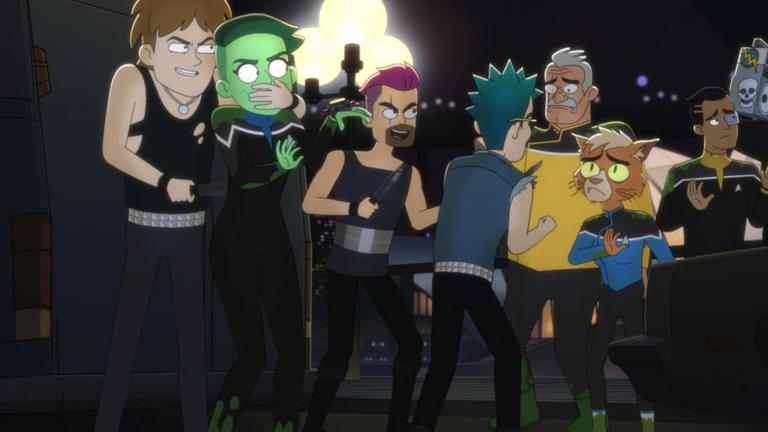
Here's how astronomers found one of the rarest phenomenons in space
The source of a huge burst of radiation from deep space that hit Earth in 2023 likely was one of the rarest and most bizarre objects in the universe: a magnetar.

On November 12, 2023, a huge burst of gamma radiation hit the European Space Agency’s orbiting INTEGRAL satellite . The rush of radiation lasted just one-tenth of a second, but immediately, an alert went out to astronomers around the world . Working as fast as possible, they turned their instruments toward the point in deep space the gamma rays had come from to see if they could find its source. And that’s when things started to get very strange indeed.
Gamma rays are incredibly bright, energetic jets that come from deep space and, on occasion, hit Earth. They have been detected since the 1960s, and astronomers thought they knew enough about the phenomenon to suspect this gamma ray was emitted by two neutron stars colliding far off in space. Neutron stars are the incredibly dense cores of dead stars, and their collisions can be explosive and send out gamma rays and other radiation, followed by gravitational waves.
“If this had to been a normal gamma ray burst, what people would have expected is to see the so called afterglow,” Sandro Mereghetti, a researcher at Italy’s Istituto di Astrofisica Spaziale e Fisica Cosmica Milano, says. “Even short bursts of gamma rays then emit radiation in X-rays in the optical band and in the radio band that lasts for several hours or even days.”
But that’s not what the astronomers found at all.
Rare origins
The X-rays were nowhere to be found. So Mereghetti and a team of fellow scientists hypothesized that the source of the gamma radiation in this instance might in fact be one of the rarest and most powerful explosions in the known universe: a giant flare emitted from a magnetar , a kind of neutron star that is highly magnetic and, despite being the size of a small city, is the same mass as our sun.
Magnetars, which like other neutron stars are birthed from the collapse of much more giant stars, have extremely powerful magnetic fields—thousands of times stronger than those found on other neutron stars—for reasons that still mystify astronomers.
FREE BONUS ISSUE
“Magnetars are powered by the decay of the magnetic field,” Mereghetti explains. “And this causes a lot of heat, so these are hot objects from this process, which also causes the emission of giant flares.” What happens, he says, is that the magnetic fields finally snap, a process similar to what happens on the sun when its magnetic fields snap and burp out coronal mass ejections —flares of energy that can cause auroras here on Earth.
These ejections from our sun are powerful—often consisting of billions of tons of plasma. But they pale in comparison to a magnetar giant flare, which can emit, in just a hundredth of a second, the same amount of energy put out by the sun over the course of a million years.
You May Also Like
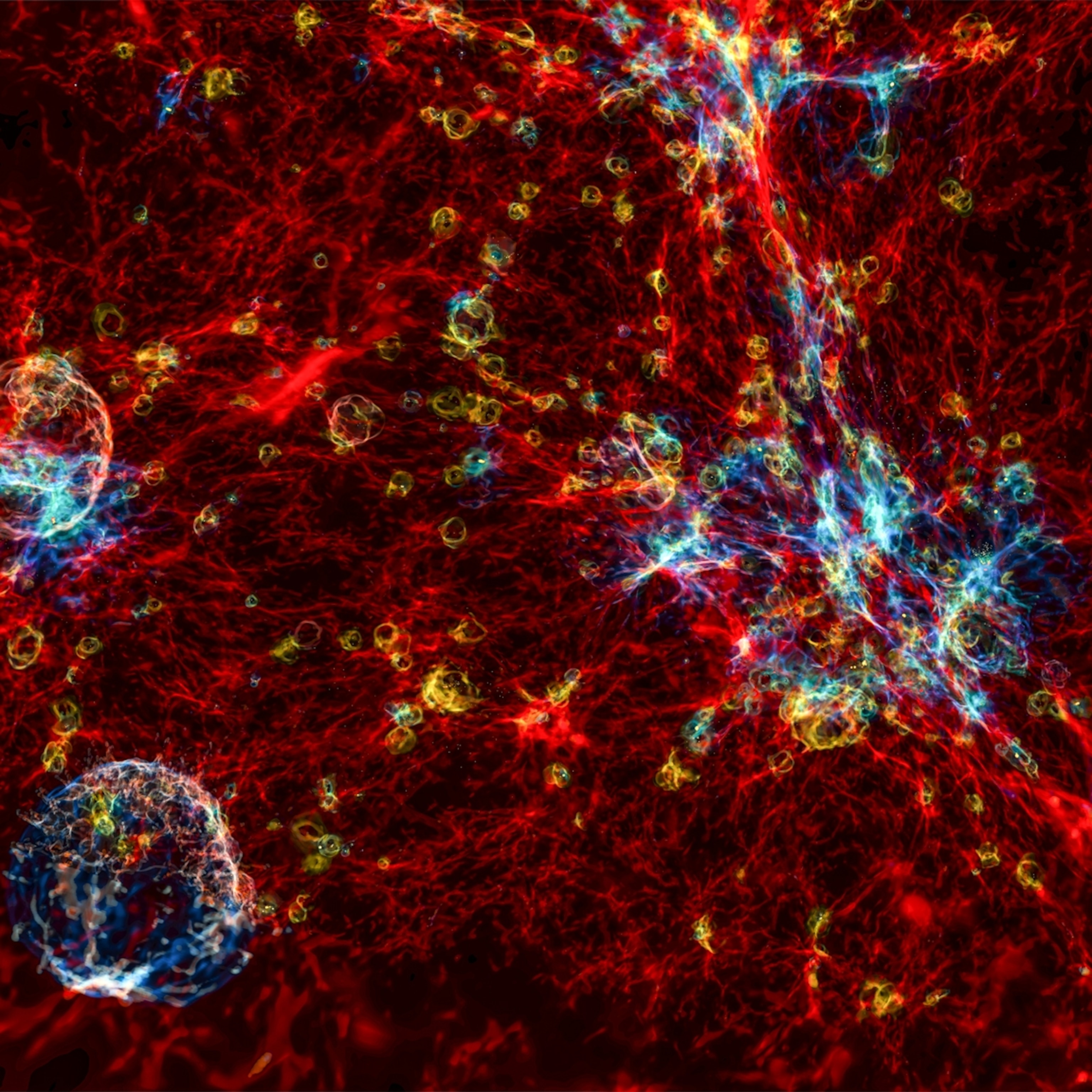
The world’s most powerful telescope is rewriting the story of space and time

How fast is the universe really expanding? The mystery deepens.

Something in our galaxy is flashing every 20 minutes—but what?
“Neutron stars are the densest matter in the universe, so if you keep adding mass, eventually that will collapse to a black hole, which isn’t matter anymore,” Eric Burns, an assistant professor of astrophysics at Louisiana State University who was not involved in the new work, says. “So that extreme density allows that object to house incredibly powerful magnetic fields. If it wasn’t that dense, the magnetic fields would just rip the star apart.”
Those unique conditions make magnetars rare and their giant flares even rarer. Gamma ray bursts are detected roughly once a month, Mereghetti says, but only three magnetar giant flares have been spotted from within the 100 billion stars within the Milky Way in the last 50 years. Spotting the flares from outside our galaxy is even harder, as you need to be pointing the detector in the right direction and be able to differentiate their radiation from other sources of gamma ray explosions.
Yet for the first time, Merenghetti and his colleagues have managed to do just that. Their hypothesis—a magnetar—seems to have borne fruit and given them a scientific first.
Lives of stars
In a new paper published in Nature , Mereghetti and his team lay out their case that the eruption detected in November, 2023 was the result of a giant flare from a magnetar located in the M82 galaxy, which is 12,000 light-years away.
“In the past, there have been a few cases of tentative discoveries of giant flairs in external galaxies, but the one that we report is much more convincing just because it's the most localized, with a much better procedure,” he says.
The results have astronomers “exceptionally excited,” says Burns, particularly because of the origin in M82. Due to the effects of its proximity to another galaxy, M82 is a nursery of sorts to massive stars, which are 10 times more common there than in the Milky Way. It is also a place where stars live fast and burn bright, making it a particularly curious object for study.
“We believe that the population of magnetars in M82 is quite large, so maybe it's not a coincidence that this event was discovered in this galaxy and not in another one,” says Mereghetti.
His team’s discovery was a fortuitous one: the INTEGRAL satellite just happened to be looking in the general vicinity of M82 when the gamma radiation arrived. The satellite itself is due to soon reenter the Earth’s atmosphere, with no replacement yet scheduled for launch. In the meantime, Mereghetti said more attention will be paid to the M82 galaxy in the hopes that more giant flares can be spotted. In turn, these can offer astronomers precious data on the physics of intense magnetic fields and the life cycle of stars.
“Stars are born, they live, they die, they explode and produce another star,” he says. “There is a cycle, kind of a biology in the universe, and magnetars are one of these elements in the evolutionary structure of the lifetime of stars.”
Related Topics
- SPACE WEATHER

It looked like a bizarre alignment of meteors. It was something else.
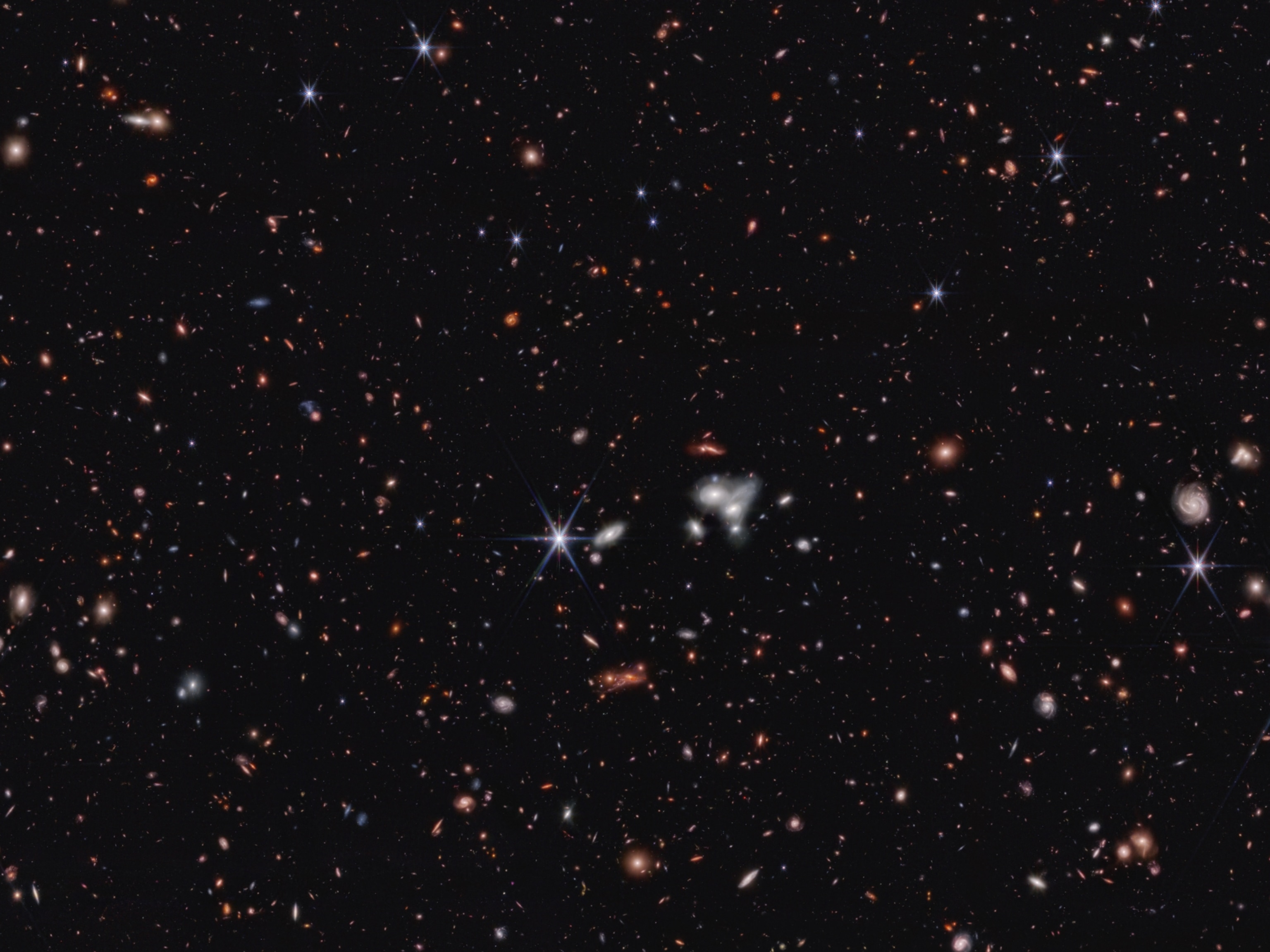
This supermassive black hole was formed when the universe was a toddler

The 11 most astonishing scientific discoveries of 2023
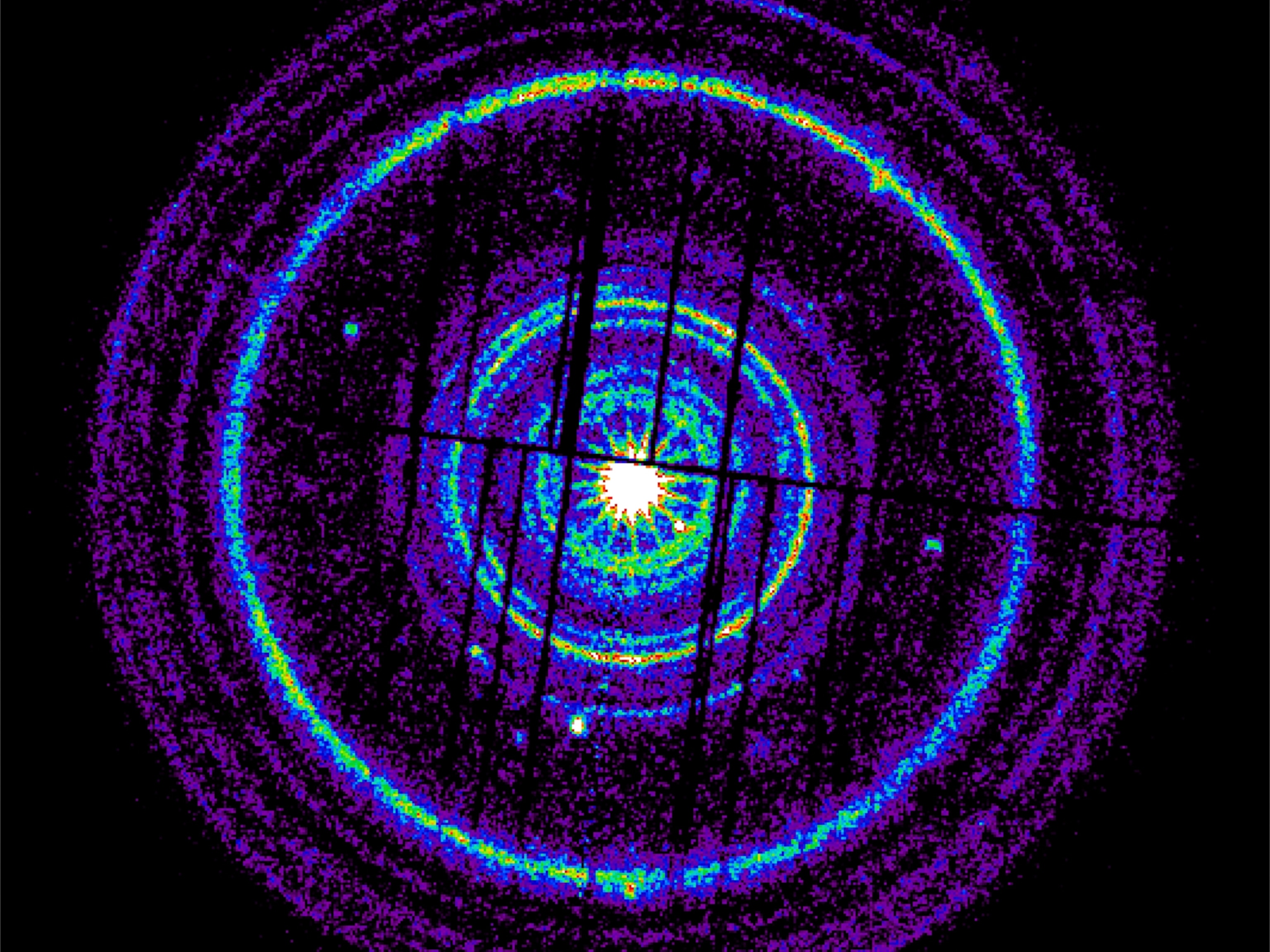
The brightest blast ever seen in space continues to surprise scientists
Every 80 years, this star appears in the sky—see the once-in-a-lifetime phenomenon.
- Environment
- Perpetual Planet
History & Culture
- History & Culture
- History Magazine
- Mind, Body, Wonder
- Paid Content
- Terms of Use
- Privacy Policy
- Your US State Privacy Rights
- Children's Online Privacy Policy
- Interest-Based Ads
- About Nielsen Measurement
- Do Not Sell or Share My Personal Information
- Nat Geo Home
- Attend a Live Event
- Book a Trip
- Inspire Your Kids
- Shop Nat Geo
- Visit the D.C. Museum
- Learn About Our Impact
- Support Our Mission
- Advertise With Us
- Customer Service
- Renew Subscription
- Manage Your Subscription
- Work at Nat Geo
- Sign Up for Our Newsletters
- Contribute to Protect the Planet
Copyright © 1996-2015 National Geographic Society Copyright © 2015-2024 National Geographic Partners, LLC. All rights reserved

IMAGES
VIDEO
COMMENTS
no. there's an episode on TOS where they leave the galaxy briefly. 5. [deleted] • 13 yr. ago. There were a few episodes where the ships got flung out into other galaxies, but most of them took place within the Milky Way. According to Trek lore, only about 17% or so of the Milky Way had been explored by the Federation.
The Star Trek galaxy explained that apart from the Romulans and the different versions of the Klingons, the Beta Quadrant's highlight is Vulcan, the native planet of Spock and other members of the Vulcan species.Multiple Star Trek encyclopedias suggest that Vulcan is located in a Sector of the same name within the Beta Quadrant. The 2002 publication Star Trek Charts also estimates Vulcan's ...
The series of novels known as Star Trek: The Q Continuum explain the two barriers, stating that they were created by the Continuum 600,000 years ago, to keep one omnipotent being (known as "The One", which is the same alien encountered in Star Trek V: The Final Frontier) sealed away at the center of the Galaxy, and to keep another (known as "0 ...
Star Trek is based almost completely in the Milky Way galaxy, and this is due to their limited technology. It was once believed that the galaxy measured 100,000 light-years across. However, new studies have shown that it's actually 200,000 light-years across. In order to travel just one light-year, it would take you about 20,000 years.
A Wannabe Blue Shirt Officer's Guide to the Map of the Galaxy in 'Star Trek'. With the third season of 'Star Trek: Picard' in full swing, it's a good time to revisit the "astrogeography" of ...
Star Trek. The galactic barrier was an energy field composed of negative energy surrounding the rim of the Milky Way Galaxy. Invisible to both the naked eye and visual recording equipment at a distance, at close range the barrier shone with a purple- to pink-colored glow. No form of transmission was known...
Summary. The Galactic Barrier in Star Trek is a negative energy field at the edge of the Milky Way Galaxy that disrupts starships and human bodies. Captain Kirk encountered the Galactic Barrier multiple times in Star Trek: The Original Series but never crossed to the other side. In Star Trek: Discovery, Captain Burnham and her crew crossed ...
Star Trek was almost entirely set in our Milky Way galaxy.. Earth was in the Alpha quadrant along with most of Federation space and the home planets of the Ferengis, Cardassians and Bajorans. One end of the Bajoran wormhole (featured in Deep Space 9) is also in the Alpha quadrant.
The Kelvans from the Andromeda Galaxy, whom we meet in the episode " By Any Other Name ," are the first trans-galactic creatures that cross Kirk's path, and they've had a pretty rough go getting through. (The way Kirk annoyingly barks "yes, I know, we've been there!" when the Kelvan captain tries to describe the barrier is among my ...
A galaxy is simply a mass of stars, gas, and dust, all held together by gravity, the same force that keeps people on the ground instead of floating away. Our galaxy is so large that light takes 100,000 years to cross from one side to the other. That leaves a lot of stars and planets still to be discovered for Star Trek in our galaxy alone!
Created: 8-3-1999. The Star Trek Cartography is the biggest source on information, data, programs and maps concerning the galactic geography in the internet. The mission of this project: to give the fans insight into the structure of the Star Trek universe for the first time, using all official facts, the episodes and the "real" astronomy in ...
The Milky Way Galaxy was one of two trillion galaxies believed to exist. The number of stars it contained was variously estimated to be over three billion to over four hundred billion stars. It generated its own magnetic field, which experienced dips and peaks. The galaxy was 100,000 light years wide. (TNG: "Pen Pals"; VOY: "Inside Man"; ENT: "Azati Prime"; PIC: "Absolute Candor") The Milky ...
But, for legions of "Star Trek" fans, they don't have to wish: one star system really exists in our Milky Way galaxy. In Star Trek lore, Vulcan is the home of logic, learning and the deeply beloved first officer Mr. Spock. While Vulcan is fictional, the star system it belongs to-40 Eridani-is very real.
Most of the action in Star Trek takes place in the real-world Milky Way Galaxy which is roughly divided into four quadrants, named after the first four letters of the Greek alphabet: Alpha, Beta, Gamma, and Delta. These are the galactic regions that include significant planets like Vulcan, Qo'noS, and of course, Earth. While Gamma and Delta still bear planets with ominous origins, the Alpha ...
Star Trek: Picard season 1's synthetic villains, who were deathly feared by the Romulan Zhat Vash, originated from another galaxy beyond the Galactic Barrier. Briefly glimpsed in Star Trek: Picard season 1's finale, the synthetic beings have tentacled arms and they intended to wipe out all organic life in the galaxy.However, the synthetic villains used a wormhole to enter the Alpha Quadrant ...
Star Trek is an American science fiction media franchise created by Gene Roddenberry, which began with the eponymous 1960s television series and became a worldwide pop-culture phenomenon.Since its creation, the franchise has expanded into various films, television series, video games, novels, and comic books, and it has become one of the most recognizable and highest-grossing media franchises ...
In the Star Wars expanded universe galaxy they have an extragalactic race that almost wiped out the Jedi and destroy the galaxy in the process. So yeah traveling outside the galaxy can be a very bad thing. ... One of my complains of more modern Star Trek material, starting with the JJ films, is the tendency to just have ships warp from place to ...
In Star Trek, the stage is not one continent or planet; it's the entire Milky Way galaxy—and beyond. On an episode of Star Trek: The Next Generation, the crew modifies a photon torpedo, ...
In Star Trek: Discovery Season 4, the edge of the Final Frontier just got a whole lot more interesting. ... For all the boldly going where no one has gone before, leaving the galaxy is pretty ...
The presented tool is a patform to explore the known star trek galaxy. The sources are the official and semi-official ones as well as wikipedia, for the real spectral class (work is in progress for many of the star systems). If you zoom into one of the system (currently only Sol and Bajor have a complete orbital) you can see the planets orbits ...
In the Star Trek universe, the Milky Way galaxy is divided into four quadrants: Alpha, Beta, Gamma, and Delta. These quadrants are defined by one meridian passing through the galactic core and a second one perpendicular to the first, which also passes through the galactic core. Most of the action in Star Trek takes place in the Alpha and Beta ...
(Star Trek: The Next Generation - The Ron Jones Project liner notes) The complete episode score, totalling 21 minutes 15 seconds, appears on Disc One of the Star Trek: The Next Generation - The Ron Jones Project collection. The musical piece to which the ballerina is dancing is titled "Waltz of the Chocolate Donut". Sets, props, and costumes []
In the span of one episode, "Discovery" officially made "Star Trek" history. Long treated as a mystery that left everything up to our own imaginations, the Breen reveal puts a specific face to ...
Kahless' crusade against the galaxy's god-like beings has been a key part of IDW's revitalized line of Star Trek comics, and now the damage he has done could threaten the entire timeline. In ...
As revealed in Star Trek #400, this was a one-way trip for Wesley, as he was not allowed to revisit his loved ones. In Star Trek: Year Five , Wesley's bosses were referred to as the Aegis.
John Trimble, longtime Trekkie and fan advocate, passed away on April 19, 2024. He was 87 years old. The world of "Star Trek" owes the man a debt. Bjo and John Trimble were Trekkies from the very ...
For generations of Star Trek fans, the catchphrase "where no one has gone before" has been an iconic call to adventure, but now it has taken on a whole new meaning. In Star Trek #19, the crew of the Theseus is heading to the Pleroma, a mysterious new realm that promises great adventure-and great peril. As they prepare for the hazardous journey, the franchise's catchphrase takes on new ...
There's no denying the price tag, but, there are few Lego Star Wars sets that can match this one for size, number of pieces and detail. Its dimensions measure over 9 inches (24 centimeters) high ...
Star Trek have ventured into animation three times in the past fifty-one years with Star Trek: The Animated Series debuting in 1973, Star Trek: Lower Decks debuting in 2020, and Star Trek: Prodigy ...
The source of a huge burst of radiation from deep space that hit Earth in 2023 likely was one of the rarest and most bizarre objects in the universe: a magnetar. ... in this galaxy and not in ...